By Rick VanSickle
One Niagara winemaker took a literary view of the Ontario harvest in 2022, calling it “Dickensian … a tale of two vintages. It was the best of times. It was the worst of times.”
In that, Creekside and Queenston Mile winemaker Rob Power is spot on with his assessment. With yields cruelly slashed in half in many parts of Ontario, it was the worst of times in terms of grape yields. But, as a wide range of Ontario winemakers, winery owners and growers detail in this annual Wines in Niagara Harvest Report, the grapes that did make it to the crush pad are of a high quality and should produce some excellent wines once they finally get bottled.
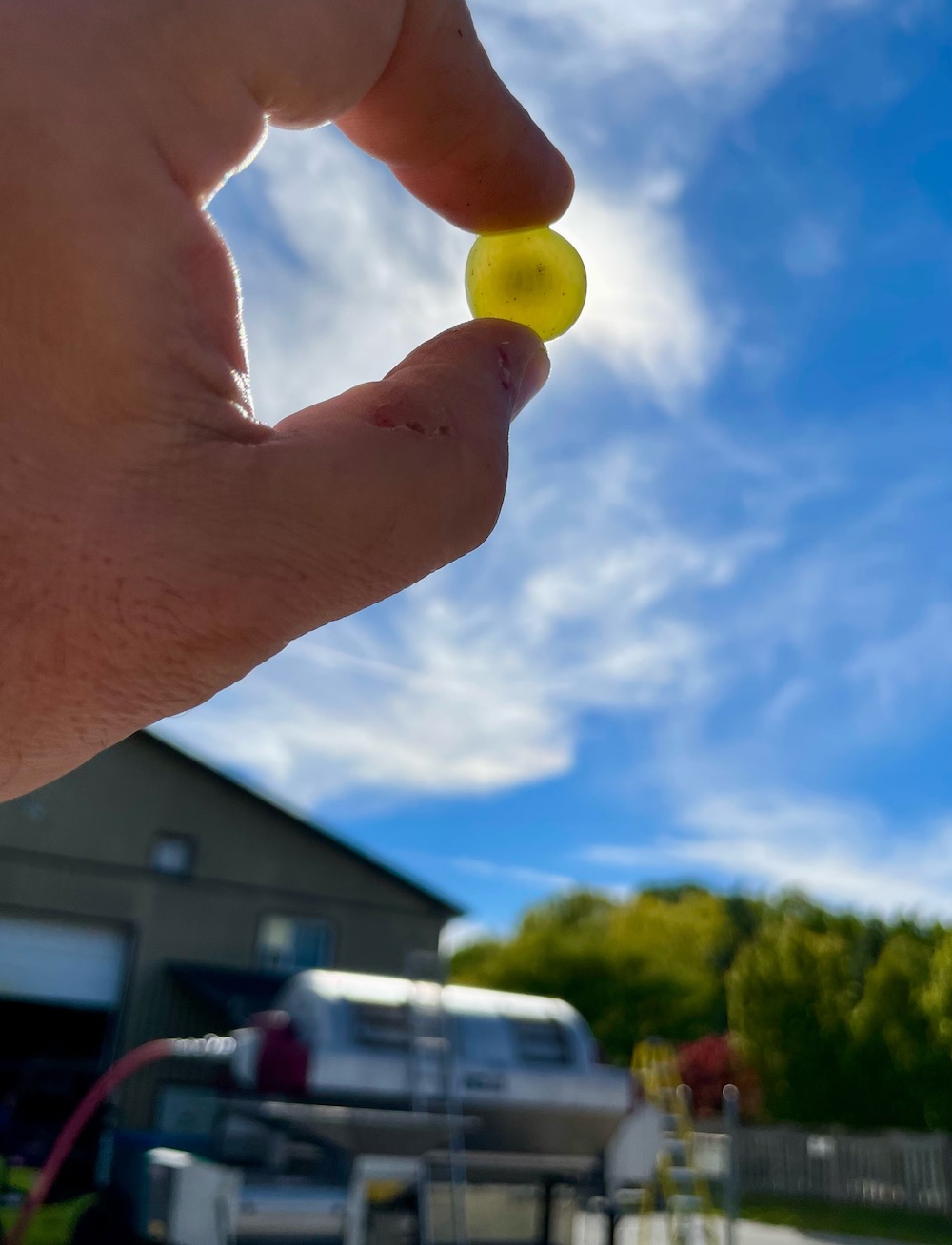
“The takeaway for Vintage 2022 is that yields were lower than usual; however, the quality exceptional,” says Levi de Loryn, director of winemaking, Arterra Wines Canada. “I can see that wine enthusiasts young and old will find a wine from the harvest they will love.”
It’s easy to equate a disappointing crop in terms of yield to a poor vintage, but the two are not mutually exclusive. The short crop was the result of a brutal winter in 2021 that laid waste to 50% of a normal harvest. But the wines from the 2022 vintage will be a product of the 2022 growing season, which is shaping up to be, as one Niagara winemaker says, an “extraordinary” vintage.
According to the Vintners Quality Alliance in its annual report on the 2022 harvest, wineries and growers in Niagara were dealing with significant vine and root damage, the result of wet weather in the fall of 2021 followed by a sudden cold snap at the end of harvest. Many vineyards did not have the opportunity to fully dry out before winter came with a deep freeze. Reports indicate that damage was widespread with varieties such as Pinot Gris, Pinot Noir, Merlot, and Sauvignon Blanc most effected.
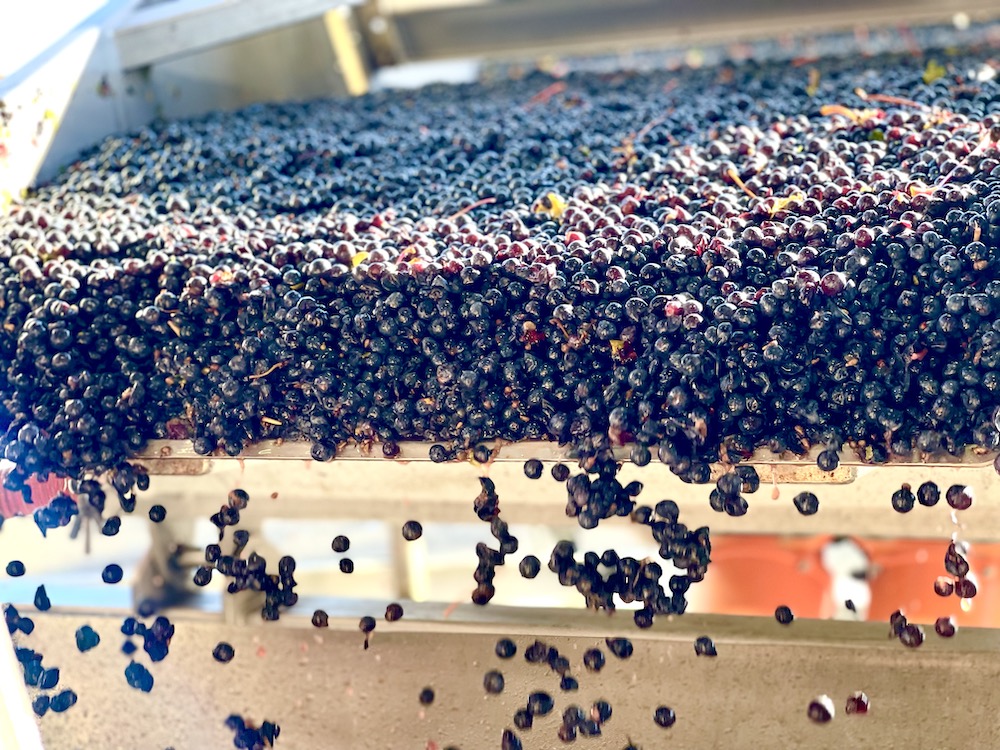
The new year got off to a very cold start, with extremely cool temperatures throughout January across the province. In southern Ontario, where most vineyards are located, it was the coldest January since 2015. Moving into February, the weather was variable with big swings in temperature, from unseasonably warm, to cooler than average, with heavy precipitation in the form of both snow and rain across winegrowing regions at the end of the month. Lake Erie North Shore fared better through the winter, experiencing warmer temperatures than Niagara.
March gave a preview of spring, with warm weather and some melting, only to have winter re-emerge for a second act. April continued the theme, with colder than usual temperatures.
June was relatively warm and dry, with a few storms bringing a lot of rain all at once, but the weather was otherwise agreeable for grape growing. July showed much the same, including an intense heat wave at the end of the month. Luckily, sufficient precipitation came through at the right time.
At the end of summer, most regions could agree that the season was progressing well.
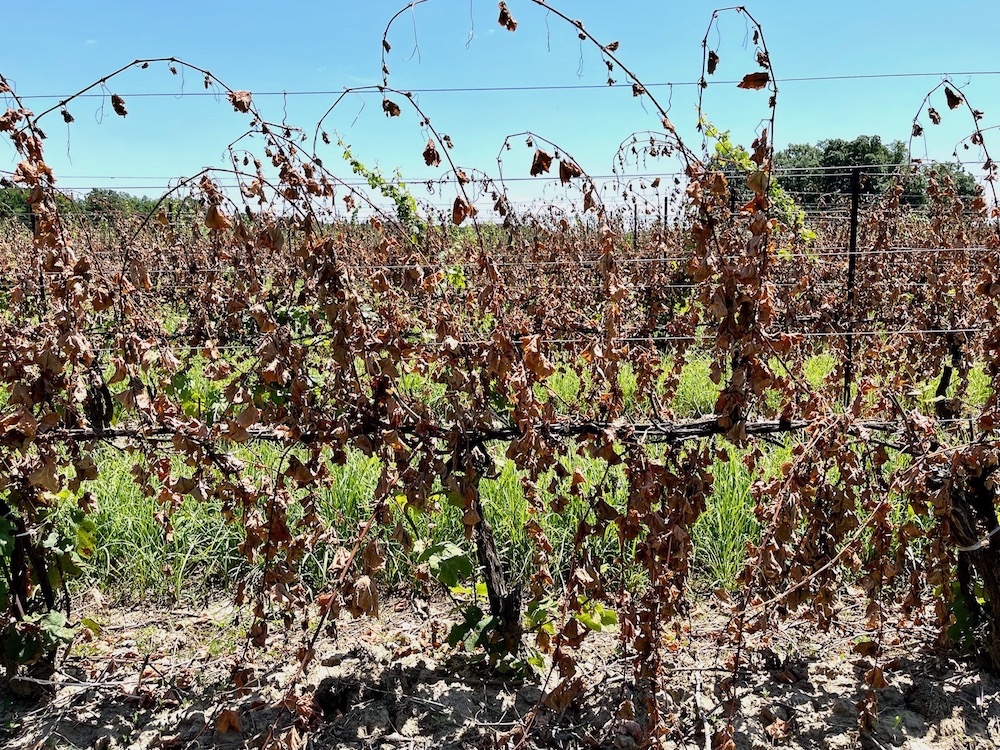
August saw several storms roll through, with significant precipitation accumulating ina short time, followed by more hot and dry conditions.
Lake Erie North Shore saw ideal conditions – an abundance of sunshine and just enough rain when needed. Grape quality was excellent and, unlike other appellations in Ontario, Lake Erie North Shore reports 100% of normal harvest tonnage. It was the driest summer in 10 years, which meant little to no humidity or disease pressure.
Reports indicate that red vinifera varieties are of especially good quality and should result in exceptional wines from the 2022 vintage.
Conditions in Prince Edward County closely mirrored Niagara, according to VQA. Although many of the vines were protected by both soil and geotextiles, a significant drop in yield was experienced. Spring was cool, which slowed bud-break, and summer was warm and relatively dry. Heavy rain at the end of the summer forced some growers to pick a bit early, but then September evened out, allowing remaining grapes to hang and ripen. Overall quality was very high, with Chardonnay from this vintage showing a great balance of acid, sugar, and phenolic ripeness.
Conditions for harvest were quite favourable, with wineries reporting a broad window of opportunity to bring in grapes. September was dry and reasonably warm, compared to last year, and enthusiastic growers made quick work of the relatively light harvest. Crop size was the main story, but fruit quality was excellent, according to VQA.
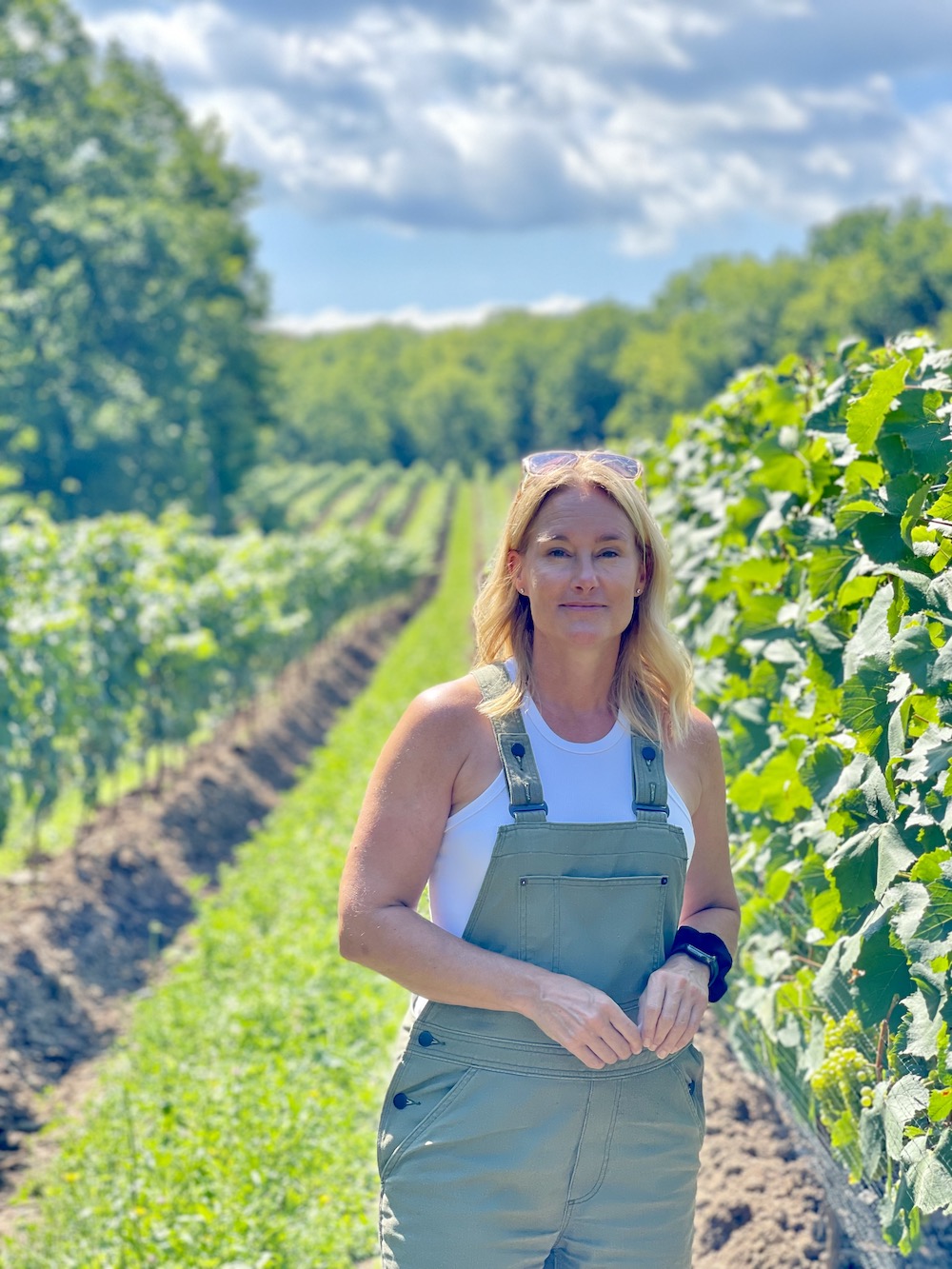
“Within the industry, many wineries experienced lower yields in 2022 compared to previous years,” says Kelly Mason (above), winemaker/owner of Mason Vineyards. “The upswing to this is that the quality was there, just not the quantity.”
For 2022, icewine grape registrations total 763 estimated tonnes, down substantially from the previous year. With the total wine grape crop in Ontario roughly half of that harvested in 2021, grapes are in high demand for table wines.
Early reports indicate 2022 will be a banner year for quality wines across the province.
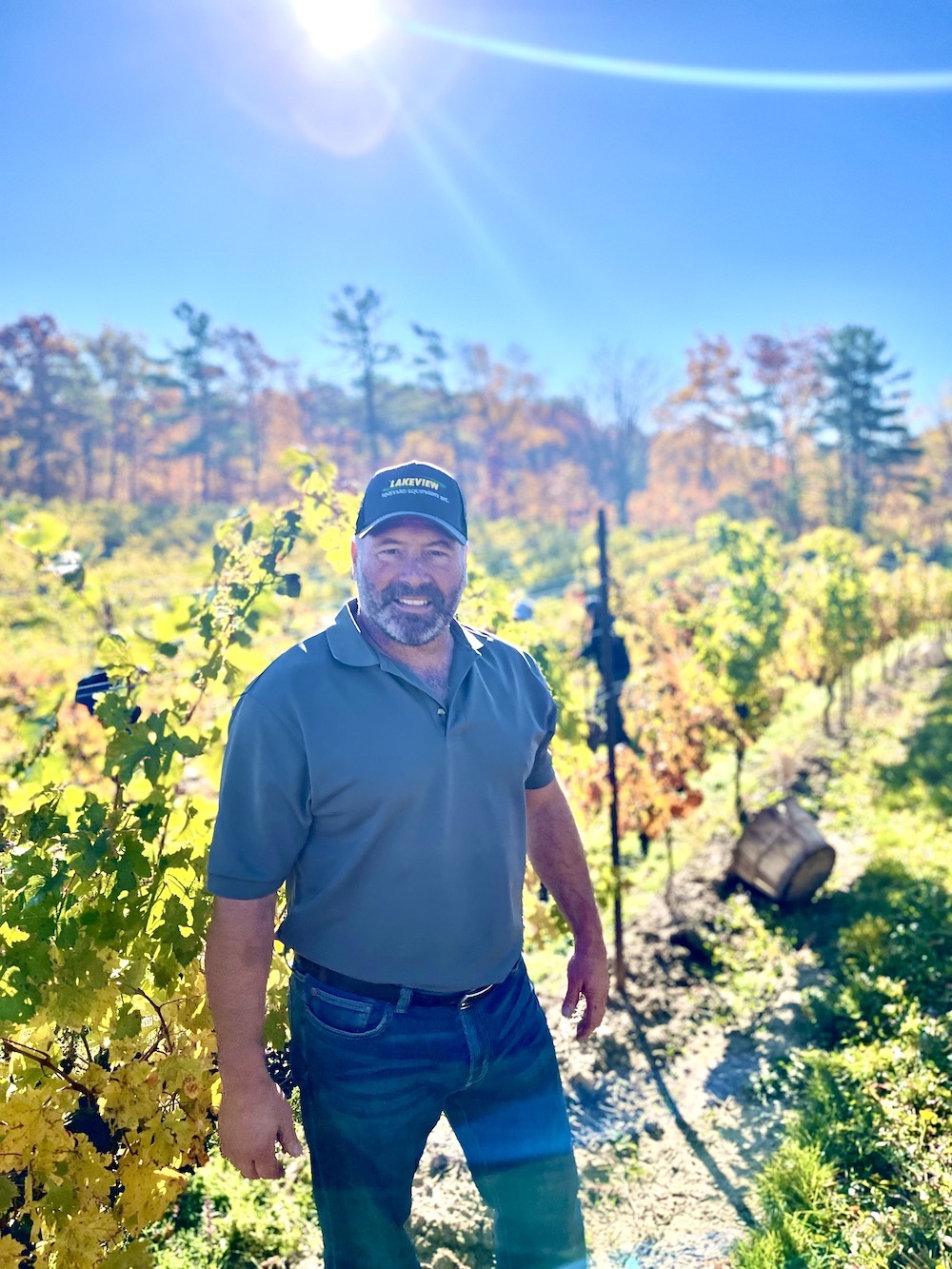
“When these wines begin to be poured at tasting bars and appear on store shelves, taste and enjoy,” says winemaker Brian Schmidt. “Perhaps even raise a glass to the winegrowers affected by the cold that lost vines in the pursuit of great wine.”
Even in the more extreme Ontario wine growing regions such as the Ottawa Valley, there was a silver lining, says KIN Vineyard winemaker Brian Hamilton. “It was a challenging year to say the least, but those who have fortitude saw the creation of some fine wines, albeit in smaller volumes.”
Niagara Harvest Report 2022
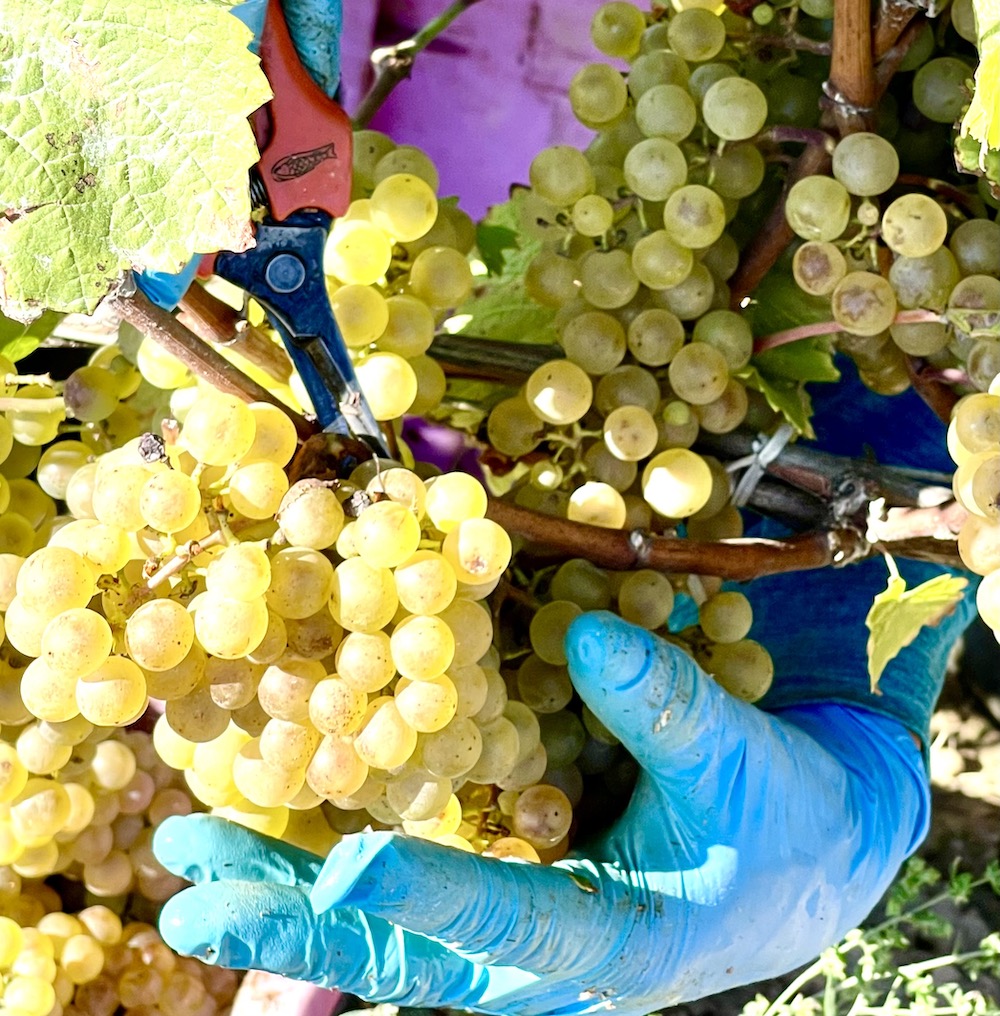
Wines in Niagara reached out to dozens of Ontario winemakers, winery owners and growers to get their thoughts on the 2022 harvest and what to expect from the resulting wines. This what they had to say in their own words.
Note, included in this extensive report: A Growers’ Perspective, and reports from Prince Edward County and the Ottawa Valley.
Kelly Mason, owner/winemaker of Mason Vineyard,
winemaker at Queylus and Honsberger
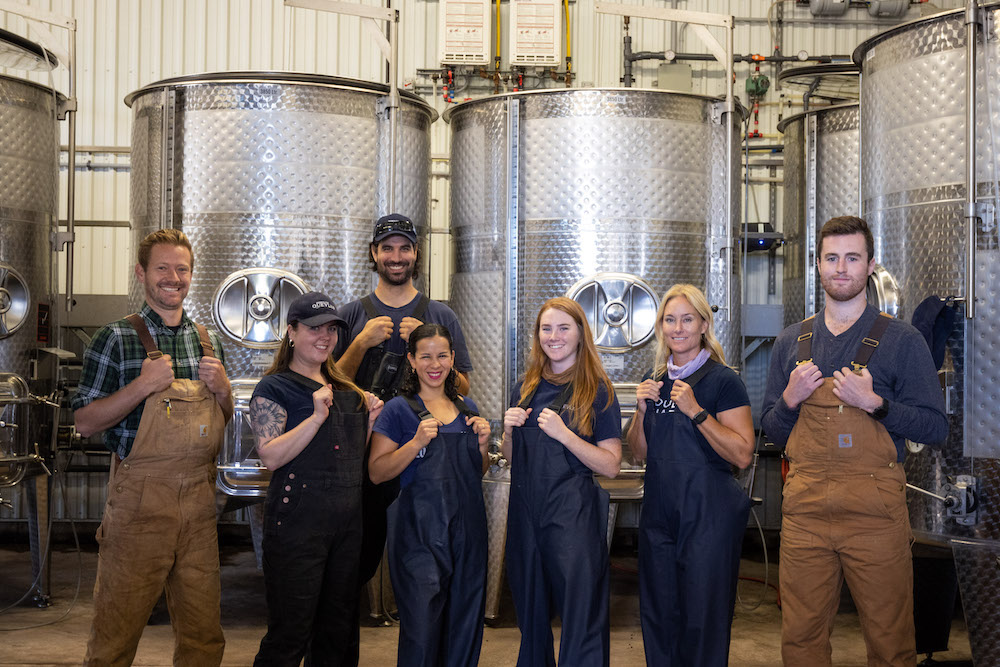
Every vintage in Ontario leaves winemakers challenged, reactive, and learning. Obviously, we try and be more proactive, but this climate always has us on defense with time outs and strategizing. The winter of 2022 did not seem that cold (especially if you were not in farming, you likely did not notice it too much). However, we had a few spells where we dipped to -18 C and colder, with very little wind. The cold settled in, causing damage to young vines, and even established ones. We checked bud damage, and it was there, trunk damage came out later in the growing season and unfortunately, many vineyards suffered from the winter that was indeed brutal to vines.
Within the industry, many wineries experienced lower yields in 2022 compared to previous years. The upswing to this is that the quality was there, just not the quantity. For Domaine Queylus, Honsberger Estate, and Mason Vineyard, the vineyard blocks came in clean. With such an experienced harvest team, we had time to think, taste, extract, and choose barrels carefully. There was less hustle and chaos this harvest. Our hours were more reasonable, and overall, it went smooth.
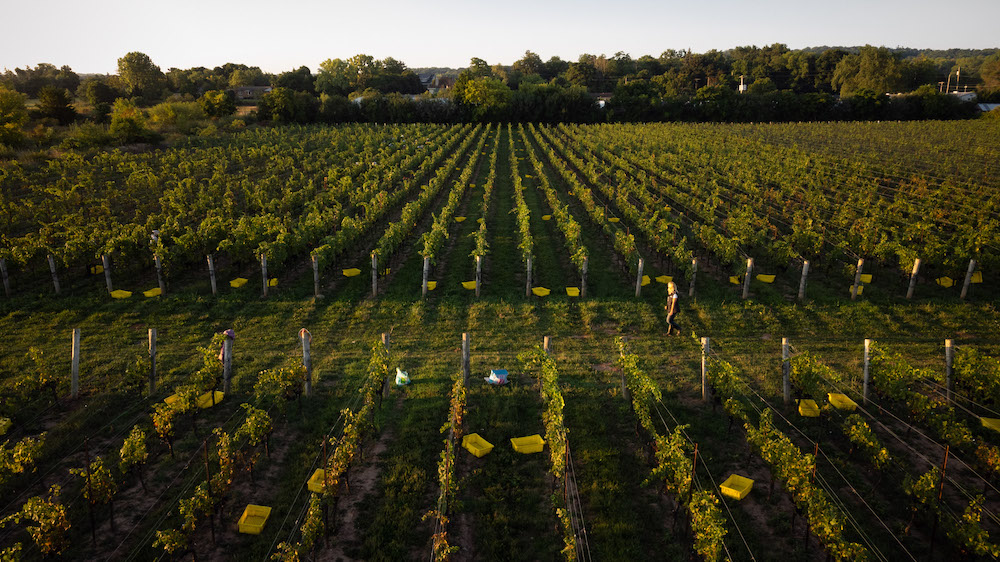
There was time to watch the wines evolve in tank (less preoccupied with logistics when yields are lower). We could focus on processing decisions and fermentation curves. I think you will see some great wines come out of 2022. Overall, the vintage is still in its early stage, but the wines look promising. I have tasted through the Chardonnay barrels and although young, they have good fruit concentration with acidity.
Right now, it’s blending time in the cellar for the 2021 vintage and as soon as that is done, we will all have our work cut out for us in the vineyard this growing season with training up new trunks and planting. The cycle starts again, and we all love the challenge and the hope of a new season.
Shiraz Mottiar, winemaker at Malivoire
and owner of Mottiar Vineyard
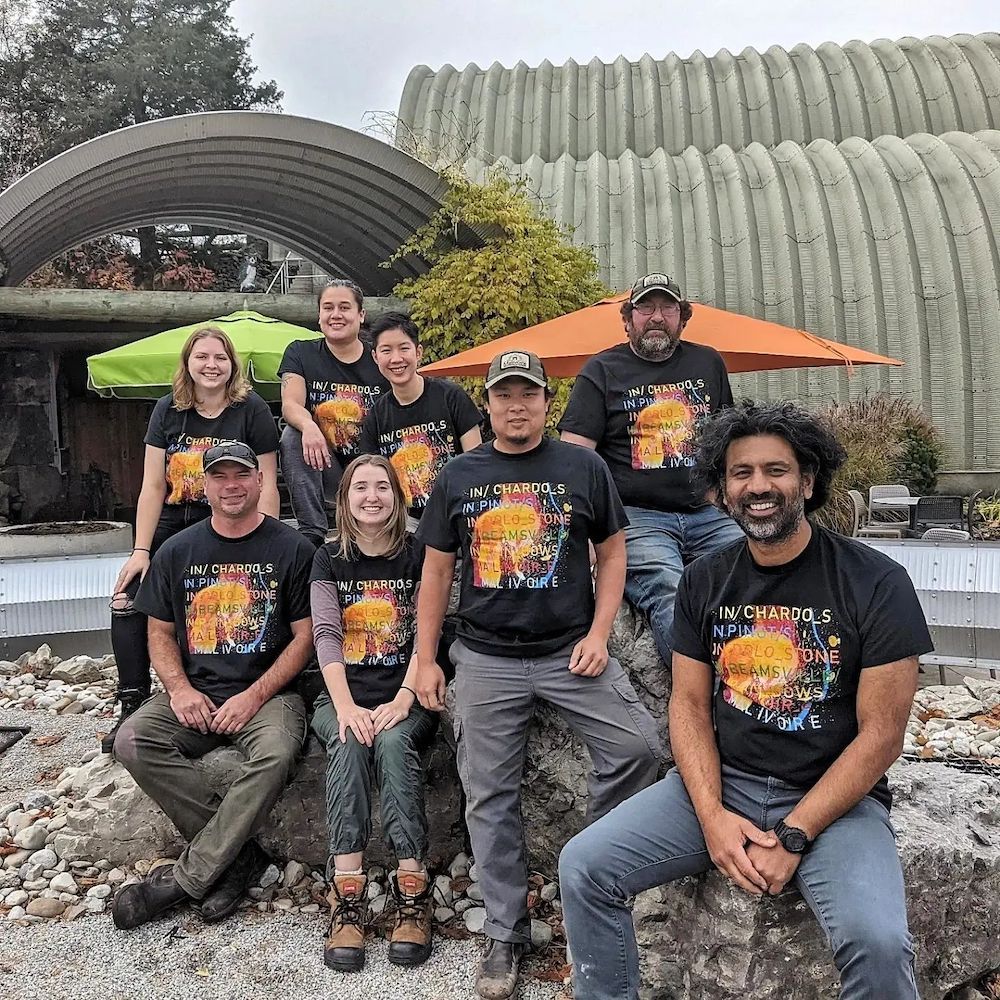
2022 was quite decent for us. The cold that caused so much crop loss for so many did not affect us as severely.
My site (Mottiar Vineyard) was significantly down, by about half of the average yield. The low-lying areas where the cold air pools had no fruit. Moira (Malivoire vineyard) was completely unaffected, and the estate vineyard had crop losses in the low-lying areas, of which there are only a few spots in our Pinot Noir and Chardonnay.
Overall, I think yields were also down as a response to the bigger yields of 2021. The main challenge in 2022 was the extreme humidity. Rains were nicely interspersed, but the mid-summer humidity was intense and powdery mildew was always threatening. Timing of sprays were paramount for clean fruit. By September, the weather was perfect, which allowed for a nicely paced out harvest. Early to bottle wines like Pinot Gris, Melon de Bourgogne, and rosés are showing nice fruit extraction and intensity while remaining fresh. I think Chardos, Pinots and Gamays, all with lower yields from the previous few vintages, will be of high quality with lots of fruit, energy, and depth.
Brian Schmidt, winemaker at Vineland Estates
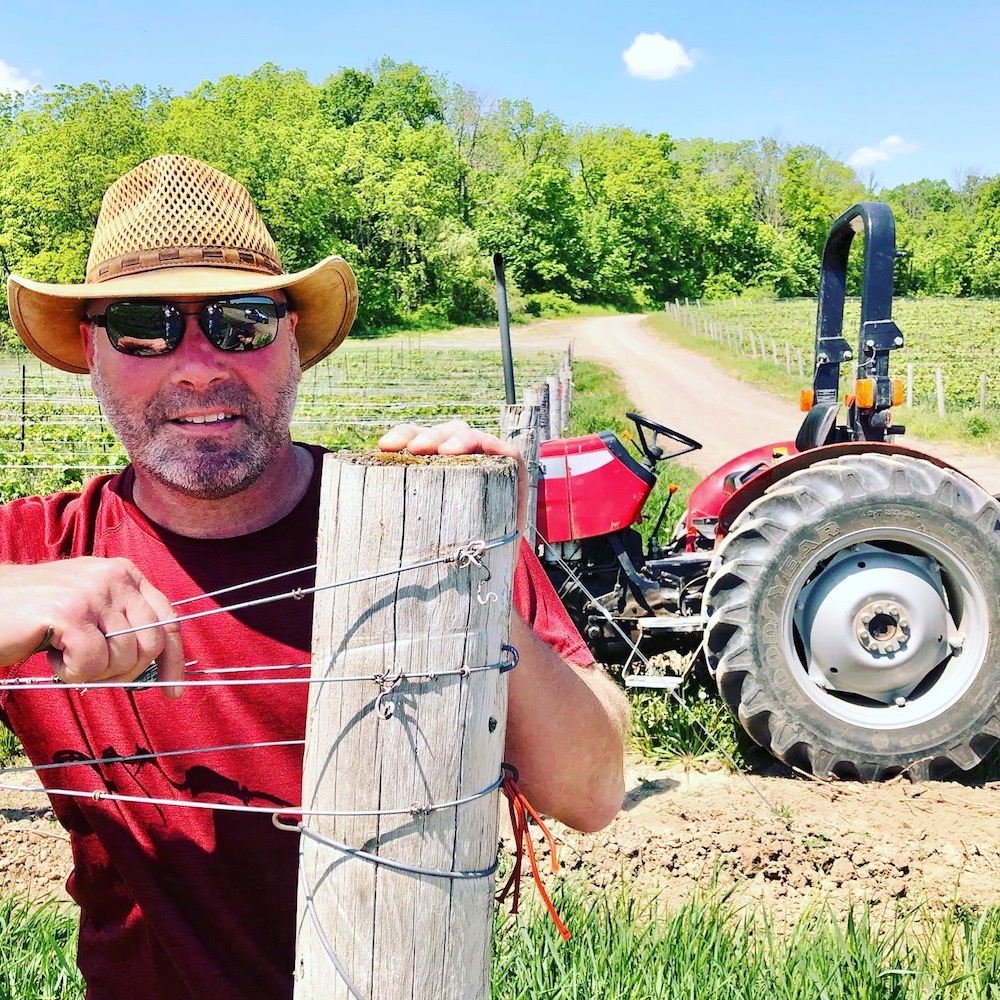
On the heels of 2021 (one of the most challenging; 1996 was worse) and by contrast 2020, thought to be the greatest, anything in between would have been welcome.
As a winemaker, the most troubling aspect of climate change is the dramatic extremes we must endure. Winemaking and wine are interesting, to some extent we can quantify the impact of climate change by talking about the quality of a vintage in general. We all talk about climate change, but to taste it, that is fascinating and insightful.
2022 showed us once again that the extremes we are subjected to can be both positive and negative. January 2022 brought excruciating cold that caused widespread vine/bud damage across Ontario. This would eventually culminate in catastrophic losses for some sensitive varieties and reduce the crop volume by more than one half.
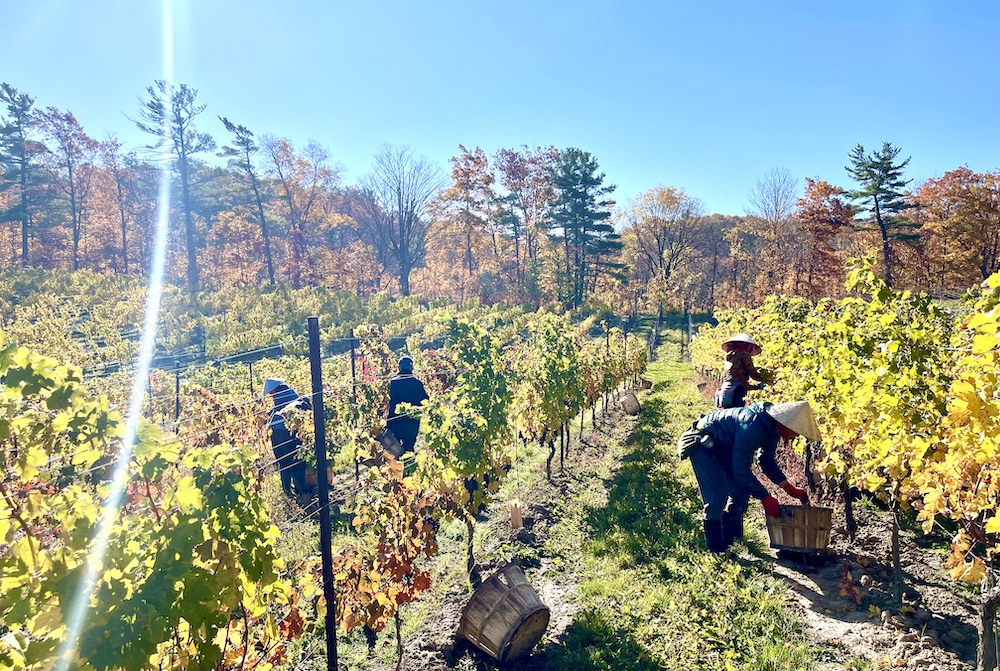
On a positive note, the growing season itself could have only been made better if we were blessed with just a little more rain in August. 2022 was, by most measurements, an extraordinary vintage. The vines and buds that survived the harsh drop in temperatures yielded fruit that in this humble winemaker’s experience rivals that of 2020 with some varieties in our cellar, such as Cab Franc, showing better balance and harmony than all past declared great vintages of 2020, 2016, 2012, 2010 and 2007 to list just a few.
I could share data, such as growing degree days, accumulated rainfall etc. (yawn). What matters is the wine in our glass. There will be limited quantities of the stunning 2022 vintage. When these wines begin to be poured at tasting bars and appear on store shelves, taste and enjoy. Perhaps even raise a glass to the winegrowers affected by the cold that lost vines in the pursuit of great wine.
Ontario Wine Growers are moving quickly to ensure sustainability is at the core of all the decisions we make to bring you great wine. Perhaps in time this will help to tackle the climate change that we can feel, see, and taste.
Rob Power, winemaker at Queenston Mile and Creekside
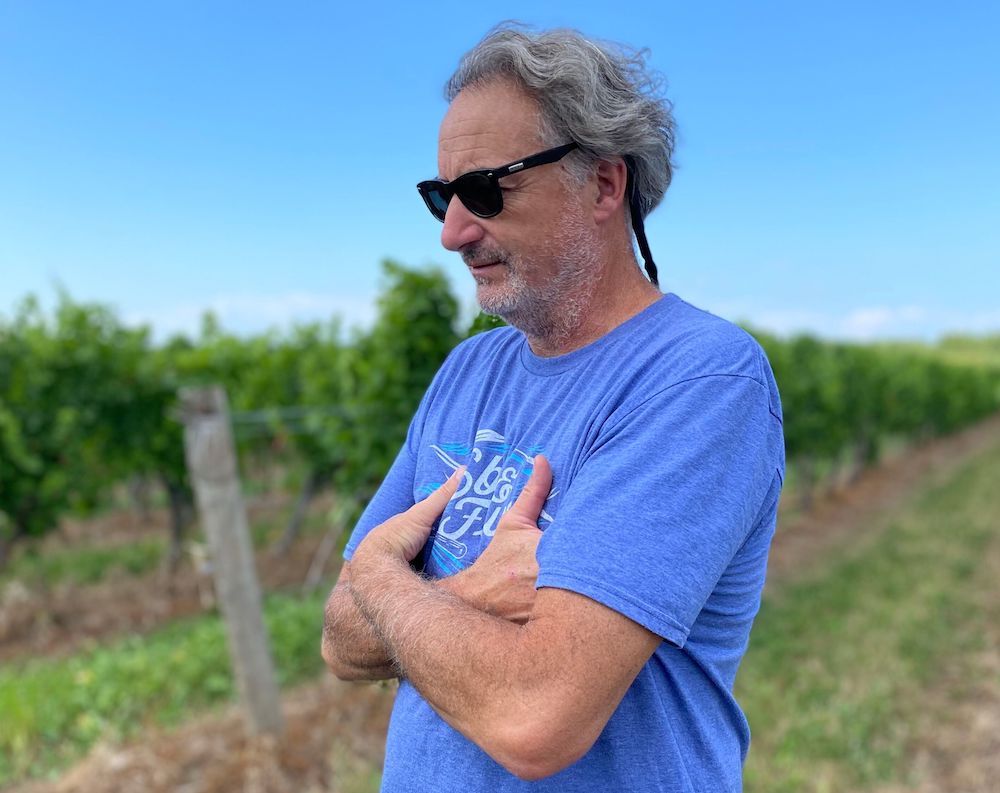
Dickensian … a tale of two vintages. It was the best of times. It was the worst of times.
Winter cold in January 2022 selectively wiped-out crop in vineyards all over Niagara, with no apparent rhyme or reason as to who/what/where got hit. Collectively, Peninsula tonnage was down about 50% from normal. But some sites were +/- 100% crop. And where we had fruit, it was a wonderful vintage. So overall, 2022s will be scarce, but well worth seeking out.
Weather-wise, the 2022 growing season was fine: good, timely rainfall and enough heat to get us to Labour Day in decent shape. I always say that Niagara vintage quality is dictated by what happens between Labour Day and Halloween. Give us a dryish September and a warmish October and we’ll be fine. 2022 autumn had better than average weather, and you will taste some great wines as a result.
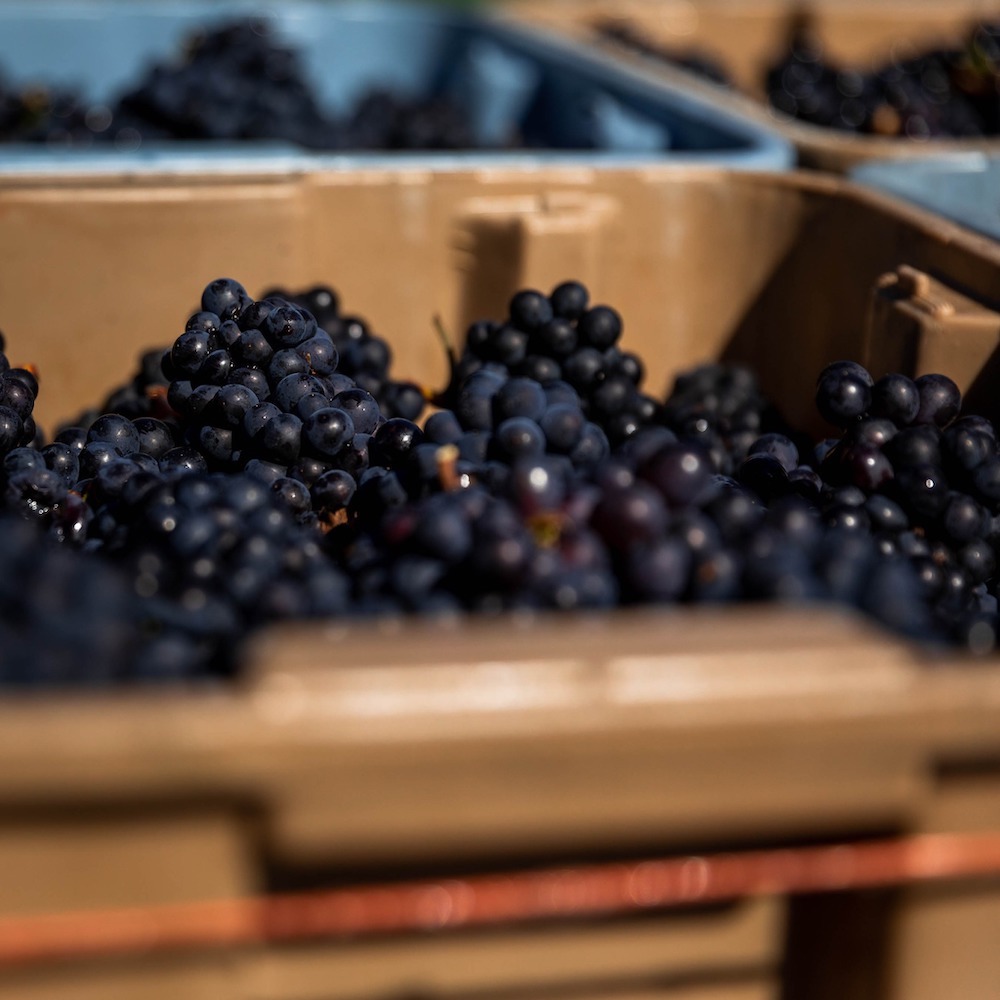
Sauvignon Blanc sites inland were hit hard by Old Man Winter, but those near the Lakeshore or the Niagara River produced a full crop with exuberant flavour.
Later-season reds like Cab Franc and Syrah ripened beautifully and made age-worthy structured wines with great fruit. Merlot crops were literally decimated, but what was picked will be wonderful.
Thomas Bachelder, winemaker/owner Bachelder Wines
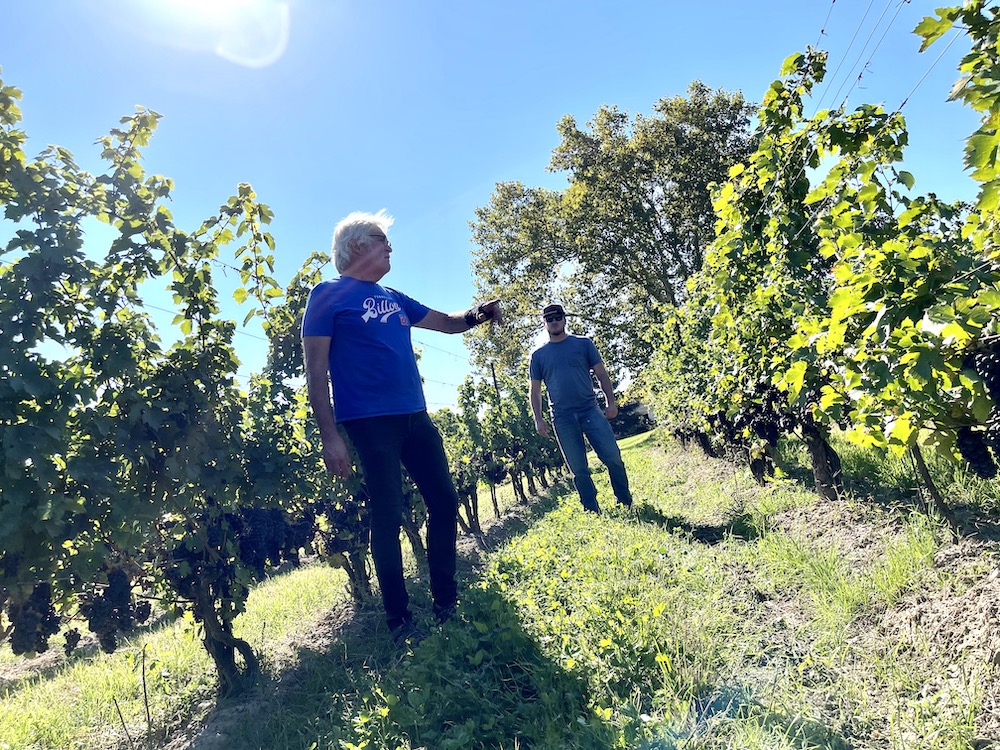
Vintage 2022 – the story is never only the winter
Of course, the background to this vintage was the brief episode of cold in winter 2021/2022 that occurred after the vines everywhere were enfeebled by a big crop — and their resulting unpreparedness for winter… the perfect recipe for bud and trunk damage. Unfortunately, though, it didn’t stop with bud damage – whole swaths of vineyards, even entire vineyards, experienced high vine mortality and had to be ripped out.
The scene was the worst on the flatter lands where the cold air had nowhere to go. It will take years to find enough plant materiel to replant.* The Bench shone and had less loss than in some other places, but even there, aspect, lower yields and careful viticulture made the difference. Gamay Noir did especially well.
The story in the cellar
To be sure, the Chardonnays are beautiful, focused, fresh and concentrated examples that will help define our limestone terroirs for years to come. They should be really classic wines!
But it is the Burgundian reds that leave me speechless: the Gamay Noirs are gorgeous and full fruited; well-coloured and with great verve!
For Pinot Noir, I have not yet seen a vintage like this in Niagara: both cool and rich?! In most vintages, our Pinot Noirs rival the rest of the world’s for perfume and terroir transparency, but they rarely have the cool drive and dry extract that Burgundy’s better (read cooler) vintages display. Well, these 2022 wines are well-coloured but not opaque; they are firm, driven with energy, balance, with heaps of fresh fruit and power.
Make no mistake: this is an impressive vintage for Niagara, and one that will be scarce. Small but utterly beautiful.
*My fervent wish is that growers everywhere who must replant take the high road and put in the grapes that best define Niagara through terroir and winter hardiness: Gamay Noir, Pinot Noir, Chardonnay, Riesling and Cabernet Franc.
It is a time of reckoning: will Niagara choose this moment to change our path and head towards a greater concentration of what we do best, and help our terroirs earn their recognition on the world stage?
Adnan Icel, owner/winemaker Icellars Estate Winery

First of all, I am devastated by the two very large earthquakes in our home country Turkiye, which claimed tens of thousands of precious lives. I have not lost any family members as they live far away from the earthquake region. But there are about 13 million people who lost everything and are living outside in the cold. I know how Canadians are golden hearted and will help those affected.
2022 was the year of high hopes, shock, and scarcity. The winter was cold, and the temperatures went south of -23 C. Our wind machine was set to -17 C and worked many hours and sometimes could not even work because of high winds even when the temps were lower.
In March, we did our regular bud sampling on each variety and the results were very promising. Everything was above 80% bud survival rate which signals you might be looking a full crop. So, our pruning crew pruned each vine to two canes with an additional insurance cane for spring frost.
We have 46 acres of vineyards planted and more than half of this was a 4-year-old block that we were expecting to get a first full crop. So, we ordered many high-quality French barrels from the best forests, some shiny new crush equipment and three new 110 hL Ganimede fermentation tanks from Italy for the upcoming big harvest.
Things started to look strange as bud break begun. Our vineyard manager Mark told me that he wasn’t seeing a lot of buds coming through, we thought it might be a late start. But at the end of May, there were fewer broken buds. Especially in the young block, there was almost nothing green on the tied canes. By June the damage that happened during the past winter became more obvious. We had to train new suckers for the young vines which we felt lucky as 99% of the vines were alive and healthy. We trained brand new canes from these suckers which easily reached the top wire with the help of an already developed root system.
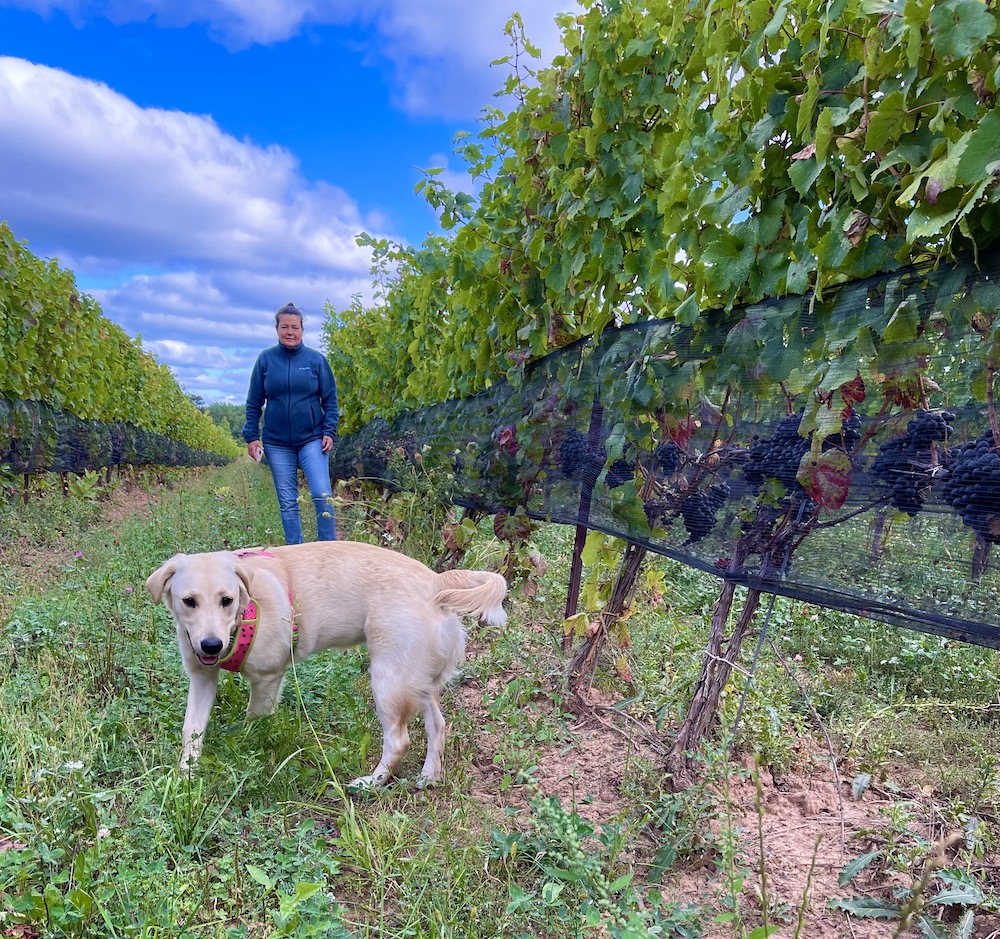
Most affected varieties were Pinot Noir and Chardonnay. Cab Sauv and Merlot were the least affected with Syrah and Malbec in the middle.
By July, all of the vineyard was very green with almost no missing vines with less than usual fruit hanging. Our next door, 35-acre vineyard, that once made very good wines, is completely uprooted because of winterkill. As I drove between the once healthy green vineyards in Niagara-on-the-Lake, I see the brutality of the winter. I guess in the next 4-5 years, there will be some serious grape shortages especially for cold sensitive varieties like Sauvignon Blanc, Merlot, and Syrah.
Our harvest was very modest, even though we got some tonnage from every variety we had. There was much less than we were prepared for. Although we did not get high sugars, the grapes ripened very well. With very small crop levels, the intensity and concentration is phenomenal, colours are very dark and tannins are well developed. 2022 will for sure will be in high demand.
On the positive side, our journey to being a Certified Organic vineyard and winery passed an important milestone as we had our successful pre-certification audit by Ecocert. All our 2023 and beyond wines will be Certified Organic. To prepare for the organic practices, even though it was not required, we used wild fermentation for 100% of our 2022 wines, including malolactics.
As we are predicting high quality grape shortages in the future, we decided to plant Sauvignon Blanc, the only grape we buy from outside, and ordered certified Sauvignon Blanc and Semillon vines from a U.S. nursery. We are planning to be a 100% estate grown winery.
Alongside with our organic farming practices, we started to apply regenerative farming starting in 2020. We are not cultivating vineyard rows anymore and we are promoting microbial growth in the soil alongside with micro fertilizer applications.
We have started a big greenhouse reduction program this year and are building a large rooftop solar PV system with back up batteries, a third geothermal heating and cooling system for winery process, a new drip irrigation system, and several laser bird deterrent systems. All of this will make Icellars a Net Energy Zero winery at the same time as being Certified Organic, Certified Sustainable and Regeneratively farmed in 2023.
Levi de Loryn, director of winemaking, Arterra Wines Canada
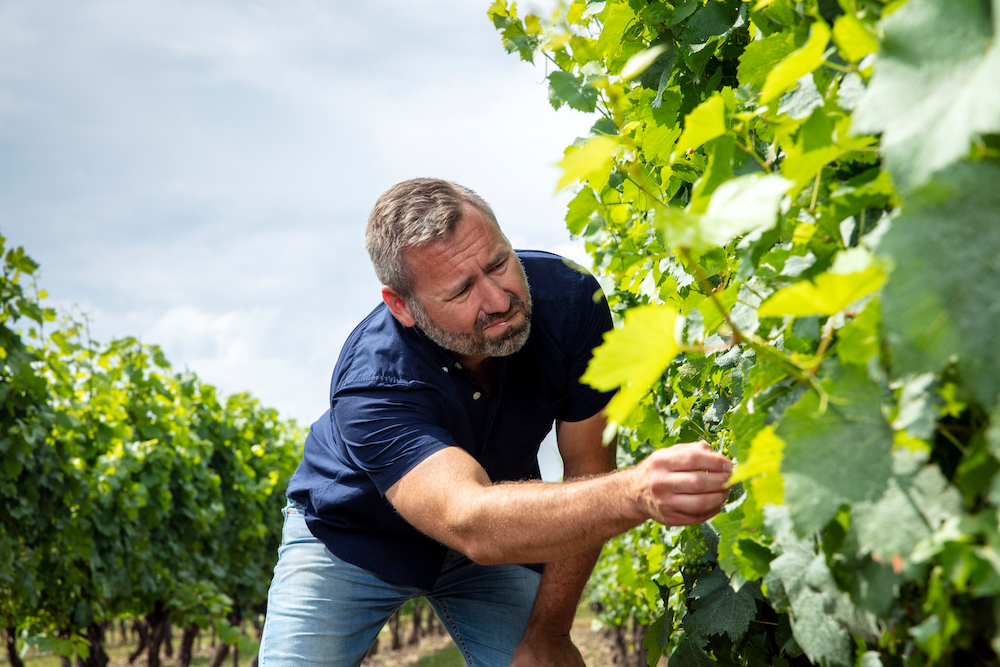
Observing the significant vine and root damage to the vineyards raised some early concerns.
Early estimations of yields going into 2022 were a worry, and as the growing season progressed the estimations did not get any better. Thankfully the weather over harvest was fantastic, warm, and relatively dry (thank goodness, after 2021), which gave us the ability to pick at optimal ripeness. The flavours were sensational, and while yields were down, the quality of fruit was incredible.
Early sparkling varieties showed beautifully phenolic ripeness and intense acidity. While Pinot Gris and Sauvignon Blanc yields were well below average, they showed remarkable aromatics and character. The Chardonnays retained stunning minerality and Pinot’s showed incredible depth and complexity. Warm days and cool nights late in the season drew out the ripening of the big reds, giving them great complexity and structure.
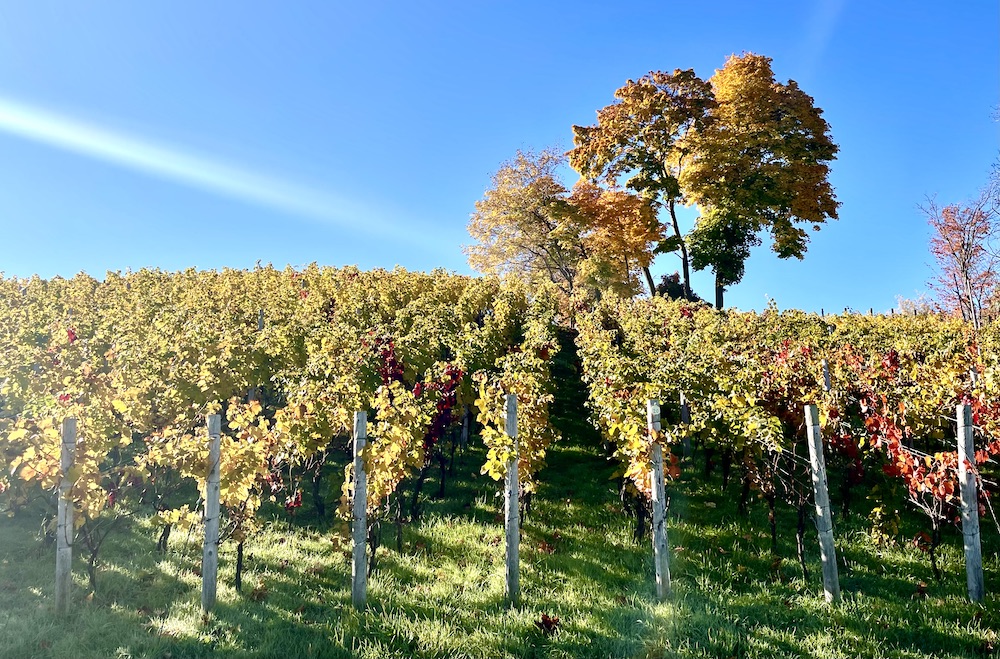
The low yields made it difficult to fill fermenters so, as they hit cooling jackets, blocks were kept separate to retain the integrity of their terroir. The Pinot Noir and Chardonnay sang this year, with driven minerality and complexity. I’m looking forward to seeing the two varieties through to bottle and beyond. They will stand up for many years to come and be the testimony of an incredible harvest.
The takeaway for Vintage 2021 is that yields were lower than usual; however, the quality exceptional. I can see that wine enthusiasts young and old will find a wine from the harvest they will love. As always in Niagara, no two harvests are the same, so embrace the harvest for what it has to offer and continue to extol the virtues of the vines and the terroir.
Nick Gizuk, estate winemaker,
Inniskillin Niagara Estate Winery
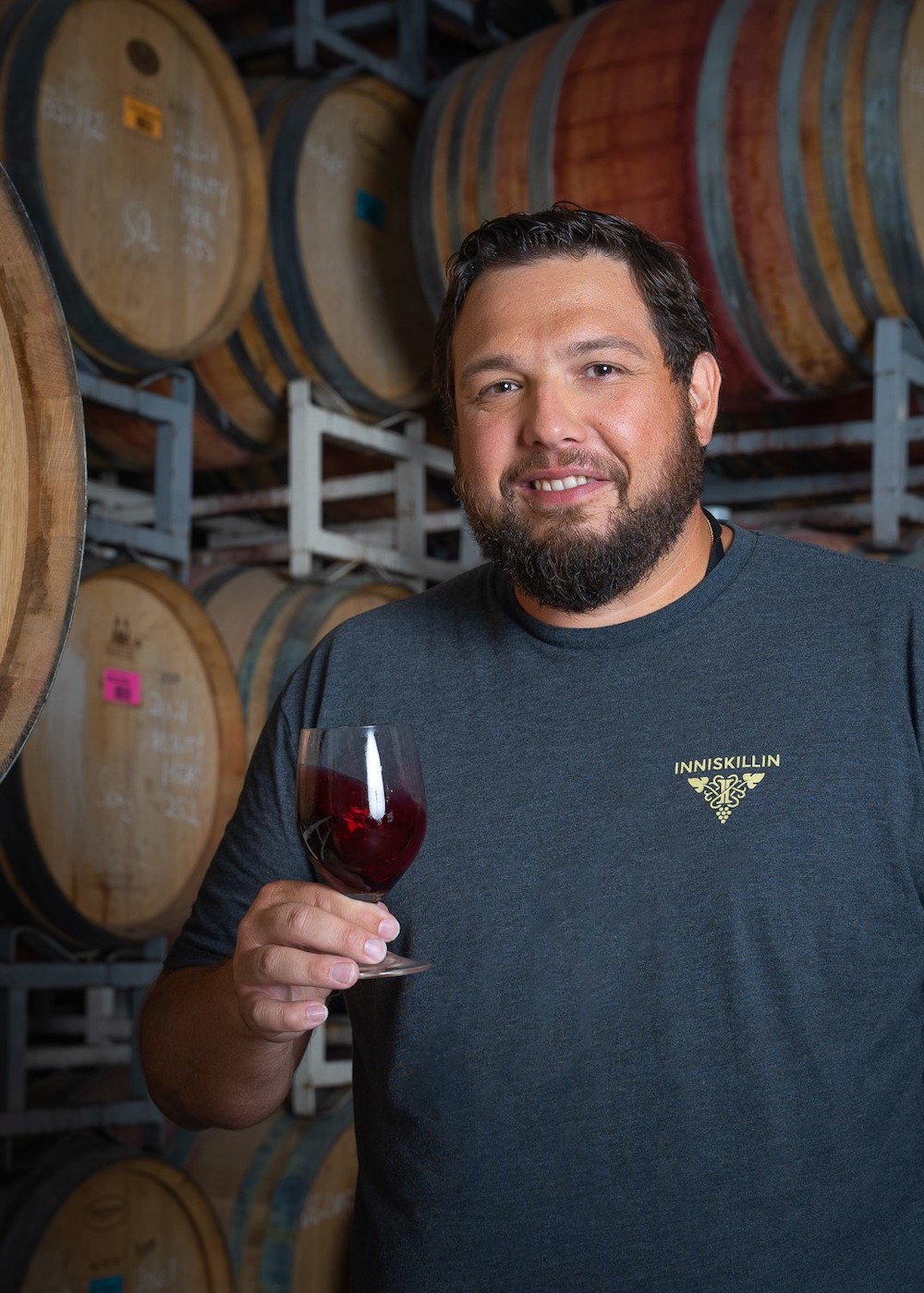
The quality growing season in 2022 led us to a strong harvest in Niagara-on-the-Lake (NOTL) and the Beamsville Bench.
The Sauvignon Blanc and Chardonnay aromatics were ahead of some varieties in the hotter plains of the Four-Mile Creek and Niagara River appellations. Although uncommon, it brought forth some great intensity and acidity. Our Pinot Noirs and Gamays have harvested at lower yields due to some winter damage, but the quality was exceptional. Both varieties have a great depth of flavours in barrels currently. The Merlot yields were down and the most challenging variety of the harvest, but all other Bordeaux reds came in on spec, with some great colour and dark red fruit spectrums. As usual, Cabernet Franc was the standout varietal this year. Both the
Bench fruit and the NOTL fruit have profiles with complex tannins and large fruit structures.
Chardonnay was also a challenge this year for Inniskillin. With some fruit left to hang a bit longer, the picking process was stretched over the month. The extra time was necessary to build flavour and intensity, and so far, it’s showing very well in barrel. I’m excited to blend the vintage 22s.
The weather permitted a very healthy Viognier yield, allowing us to make it a single varietal. It’s a tough variety for this area and keeping the skin healthy to get the full spectrum of viognier flavours varies significantly from year to year.
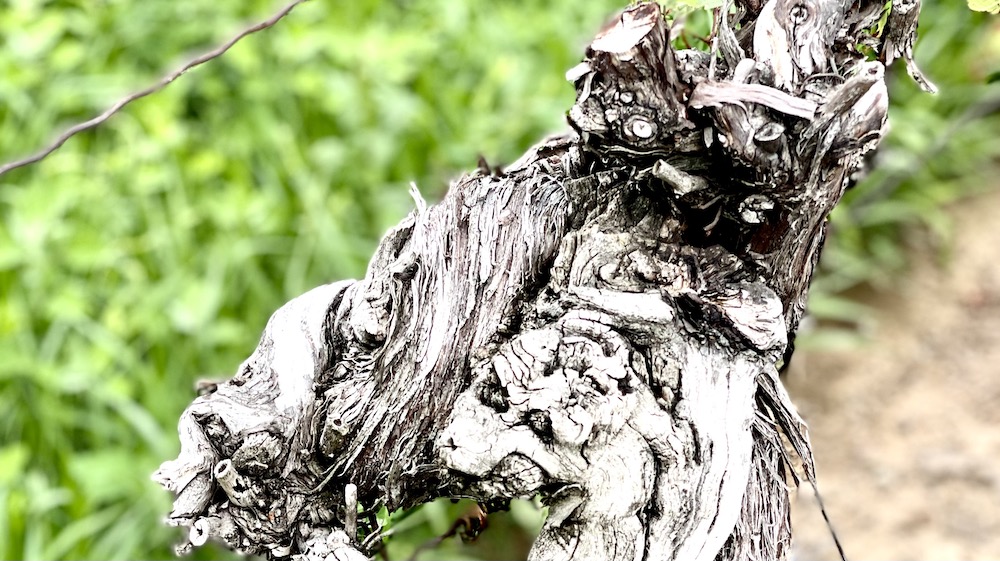
As usual, the Riesling is exceptional — a great representation of why this is a staple variety in Niagara, especially Inniskillin. We make varying styles, from dry to a very sweet susse reserve.
My passion grape, Cabernet Franc, was picked from four different appellations this year, and they are all showing their distinct nuances from those sites. The Bench fruit showed a textural salinity, while the Creek fruit showed a meaty raw richness. Together, they will make a beautiful reserve.
Timing is always something I grapple with during harvest, as it can make or break a vintage, especially with Sauvignon Blanc and Pinot Noir. This year, I did multiple early pickings of Sauv Blanc to preserve the green, grassy character I love in New Zealand’s Sauvs, and matched that with some later harvested, riper fruit to bring in strong aromatics and find a balance during blending trials.
I’m looking forward to seeing the results as some of my wines are already displaying new characters. The Montague Merlot usually displays dominant blueberry and raspberry flavours, however, this year in lower yields it showed intense dark plum and cassis flavours. The Pinot Gris, another true standout in the cellar right now, showed amazing texture and flavour, even as it struggled to stay healthy during the humidity pressures.
We should see some notable examples of cool climate Pinots that will be signature examples in the coming years of our unique styles and terroirs. Even with lower crops and less pressure on the vines during the growing season, we will see well showcased, varietally true wines from this vintage. The overall quality from this year will be great.
Kevin Panagapka, winemaker/owner 2027 Cellars
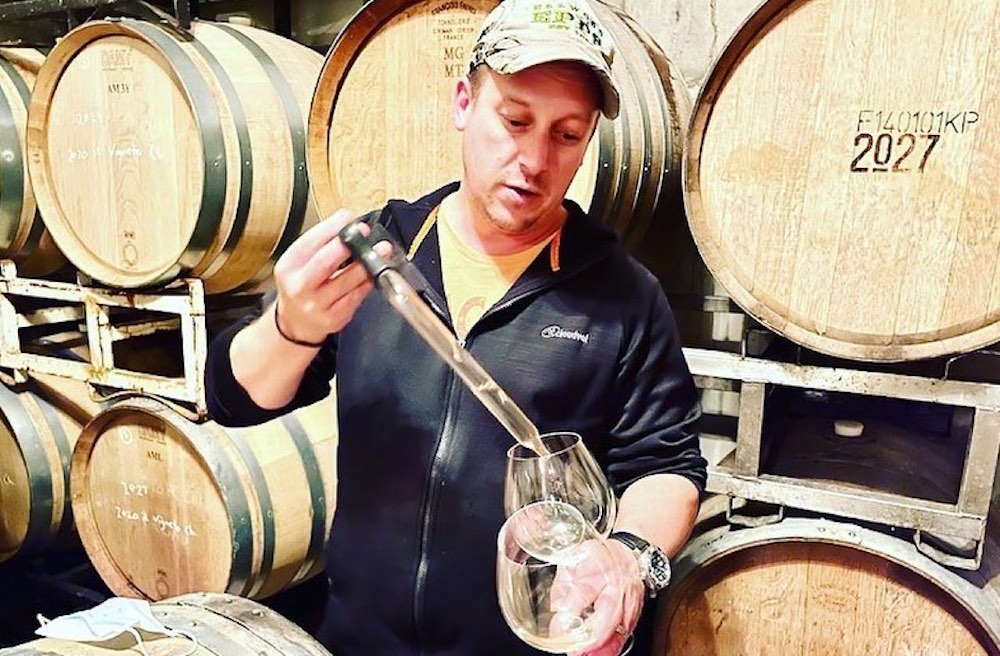
Coming from the massive swing harvests of 2020 and 2021, the 2022 vintage was more of a “typical” growing year in Niagara. Relatively low disease pressure throughout the year and a cooler, dry fall led to quite a good year for Niagara, in my opinion. With vines damaged due to disease pressure and a cold winter in 2021, there was a shortage of grapes in 2022 but the quality was very good to excellent from specific blocks I work with.
Bordeaux reds are looking very good in barrel from vineyards that survived the winter of 2021. Riesling and Chardonnay look very good, Gamay also looks good with higher acidity than 2020 due to the cooler season. All in, I’m quite excited about the quality of wines produced from 2022.
I made a Cabernet Sauvignon in 2022 from a small vineyard on the Beamsvillle Bench that I’m amazed at the ripeness, quality, and ripe tannin structure. For me, this indicated the top-quality vineyards in 2022 will produce some outstanding wines.
Harald Thiel, owner of Hidden Bench,
winemaker Alex Baines,
and vineyard manager Joel Williams
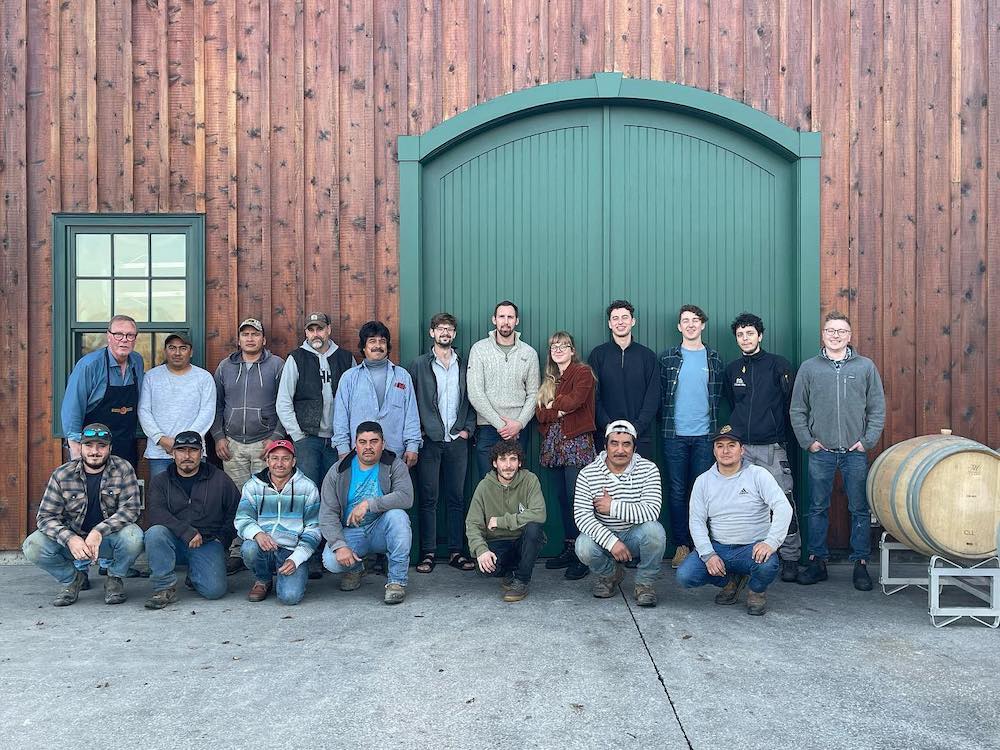
Although some producers in the area suffered from severe winter damage this year, our unique sites and vineyard practices at Hidden Bench on the slopes of the escarpment, meant that we fared relatively well and took almost a full crop into the winery this year, albeit 25% smaller than the record 2021 vintage
The growing season was moderate and dry early on with seasonal rain fall. Our main challenge this year, as an organic vineyard, was managing a healthy canopy as the humidity was very high from June to August. As we moved into the harvest period in September and October, we had good, dry weather which allowed us to time our picks for when physiological ripeness and flavour were best balanced, ensuring the resulting wines would be of the highest quality possible.
Overall, we are very pleased with the quality the young wines from 2022 are showing in the cellar at the moment.
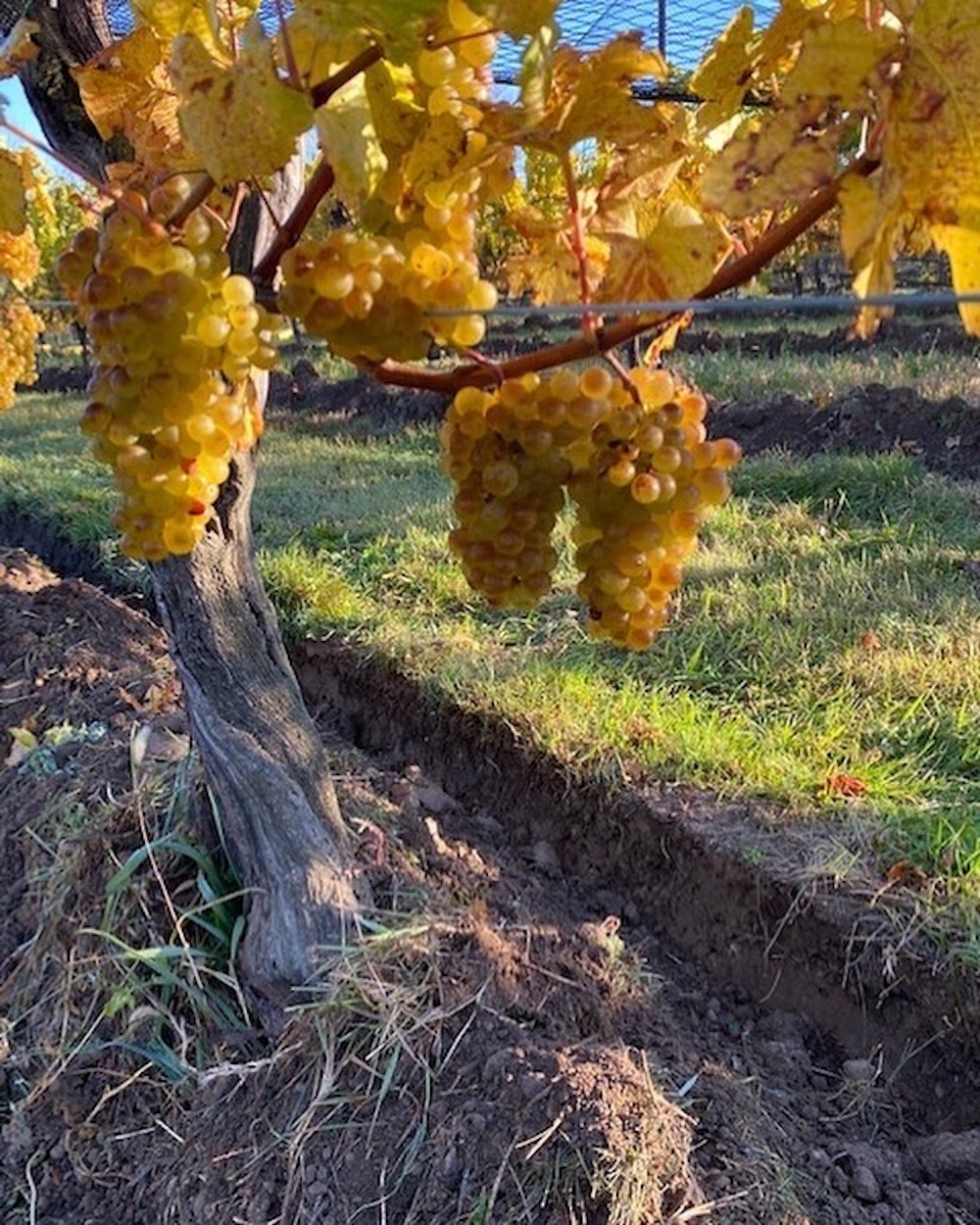
Across all varieties from 2022, our estate fruit reached exceptional levels of ripeness and concentration this year, similar to those of 2018 and 2020. However, cool nights at harvest meant we were also able to retain freshness and acidity in the fruit. We see the wines from 2022 landing somewhere in between the delicate, acid driven wines of 2019 and the ripe, structured wines of 2020.
It is still too early to tell but we are quietly confident that the wines from 2022 will be among some of the top vintages we have produced to date, however, quantities will be limited due to some winter bud damage during the winter of 2021-22.
Dean Stoyka, winemaker Stratus Vineyards

2022 started off very unexpectedly with some very serious winter damage in the region. We were all aware there was likely some winter damage, but I don’t think anyone could have expected how devastating the damage was. Growers with vineyards on even the slightest slope avoided the worst of it and some varieties performed better than others through the winter, particularly Cabernet Franc, which was not impacted much on our farm.
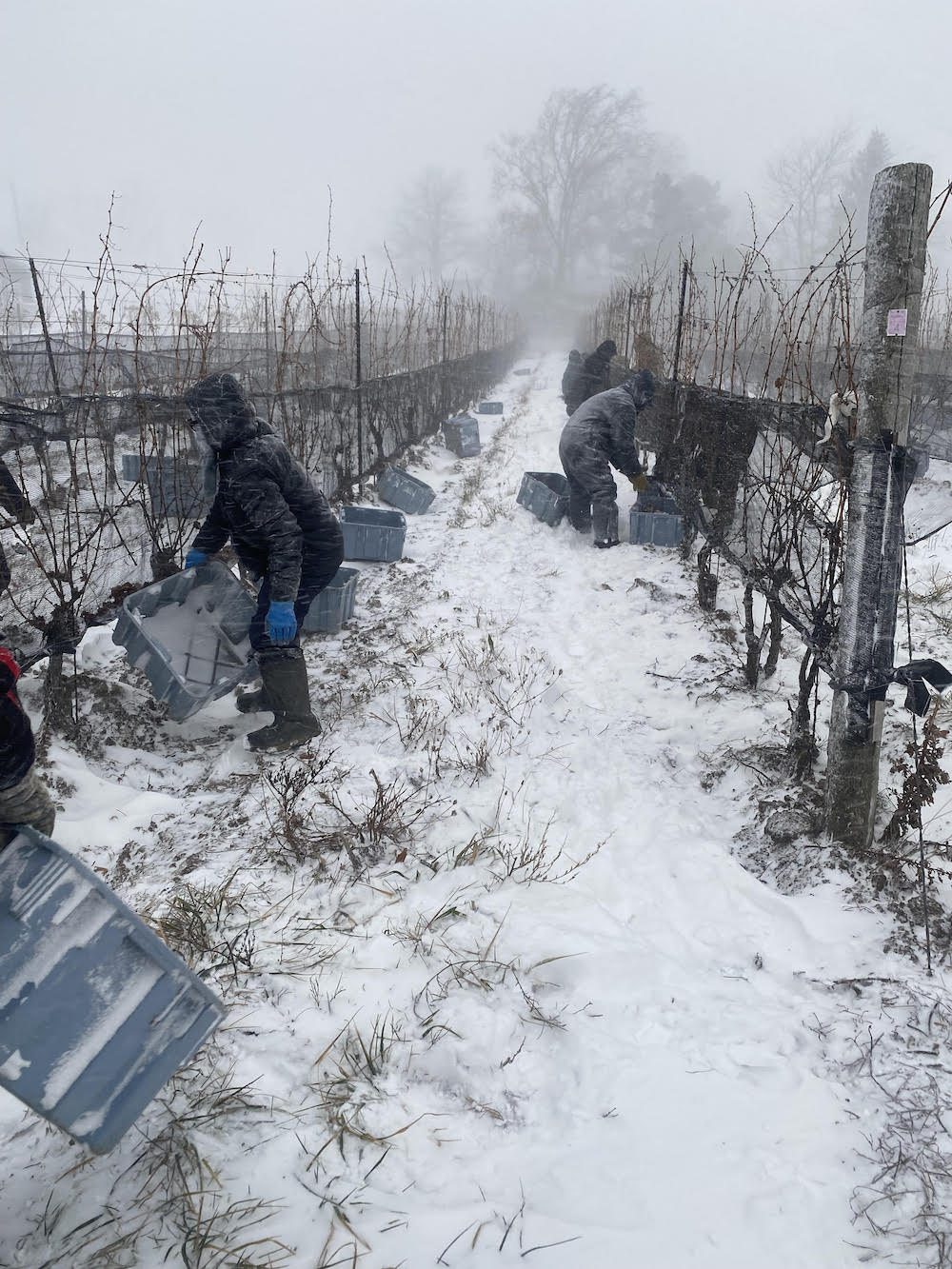
The growing season itself was a fantastic year and the summer was a perfect mix of sunshine, heat, and timely precipitation to keep the dry farmers like us happy. The fall was hot and long. It was one of those years where the entire peninsula was blessed with beautiful fall colours that seemed to last forever. The vines were easily able to reach full maturity and had a natural leaf fall before the first frost. A window for icewine presented itself on Dec. 23 during the blizzard and we took the opportunity to pick a fantastic Riesling icewine that night. Overall, the crop in 2022 was small but mighty in quality. We are excited for the reds including Cab Franc and Cab Sauv and excited about the potential of Chardonnay from 2022.
Lydia Tomek, winemaker at Ravine Vineyard
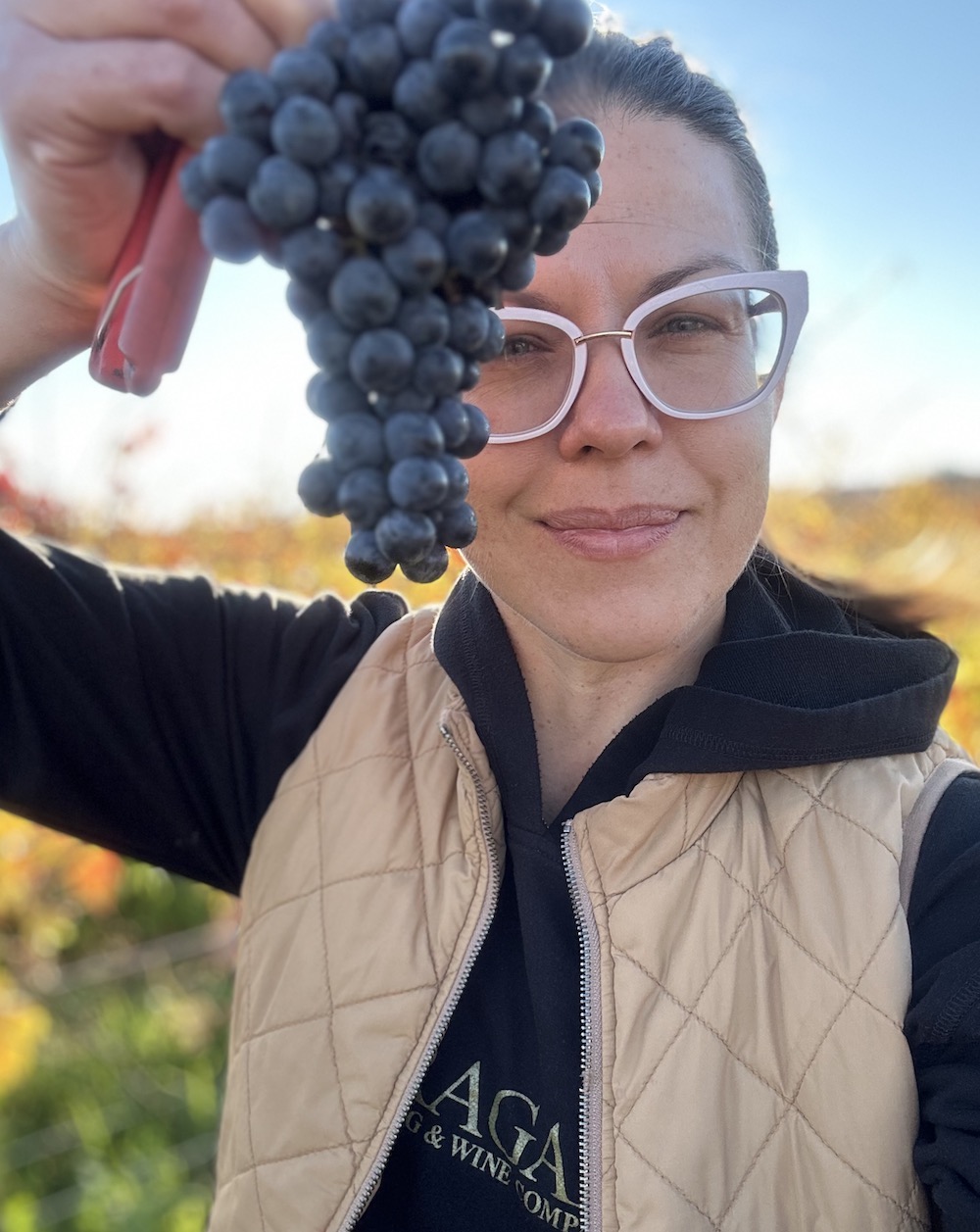
We all know the year started off with its challenges. On our sites we experienced not one but eight critically cold days where temperatures dropped to levels that cause some primary bud damages and, in some spots, vine death. Going into spring, things looked grim, and we thought we were going to be down substantially at harvest.
Interestingly enough, some sites that we thought were going to perform decently, started to tap out in late July. I guess some vines could only take so much stress and the high heat and drier periods in July were probably to blame for this.
Our Sauvignon Blanc and Riesling sites (no surprise here that our white knight came to the rescue again), that we expected to have lower yields, pleasantly surprised and over exceeded expectations.
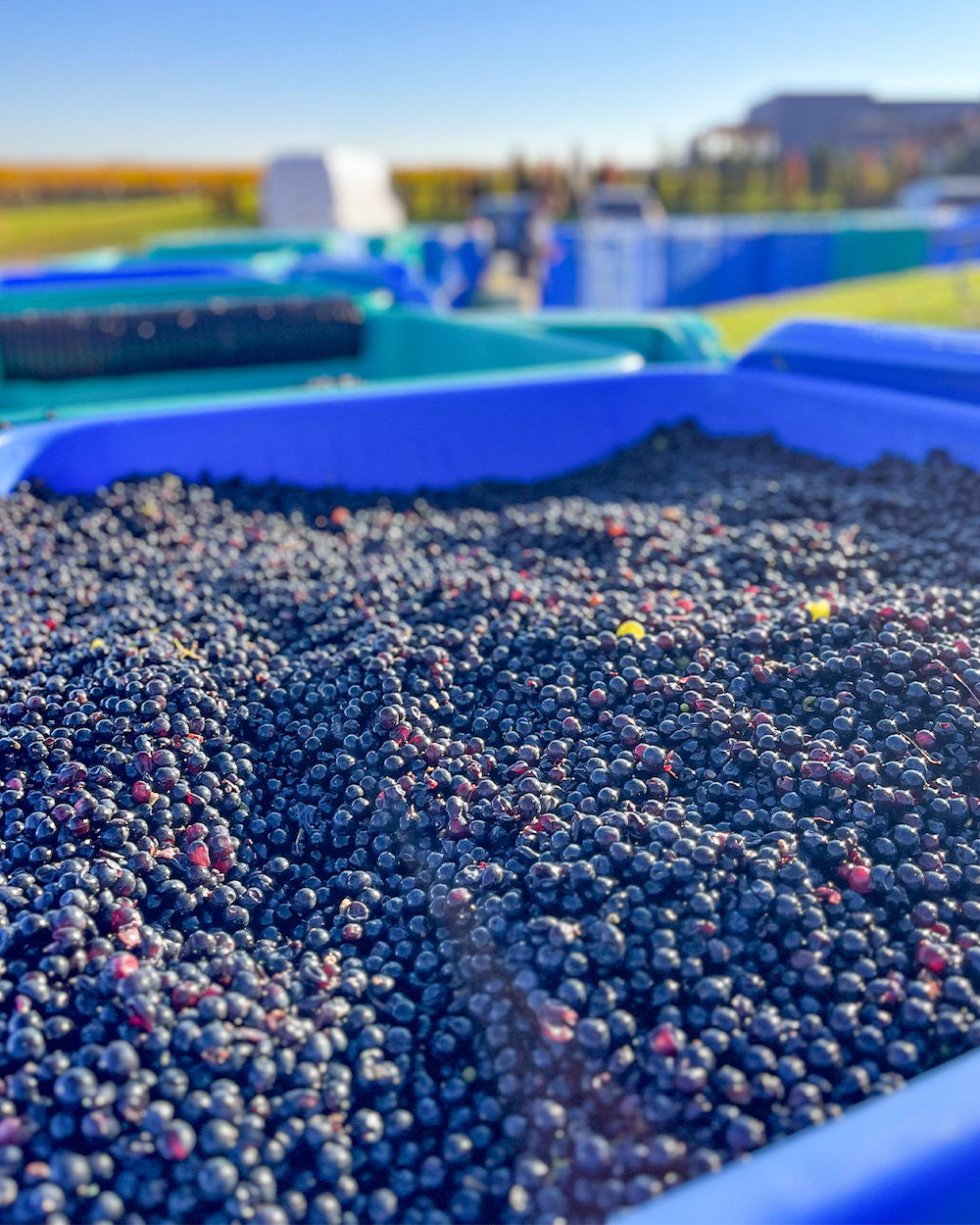
I never would have guessed that our red champion for us this year was Cabernet Sauvignon. For both of our sites (estate and new Four Mile Creek vineyard), it proved to be the most complete, cleanest, and ripest fruit reaching our target yield.
So yeah, yields were down because of the deep freeze winter marathon but the Indian Summer temps that blessed us in October came to the rescue and what we did bring in truly was special. An intensity of flavour, a perfect placement of all the right acids in the right places to celebrate what it is to make wines in a cool climate but also one where a warmer ripening season adds richness and depth.
Explanation and insight
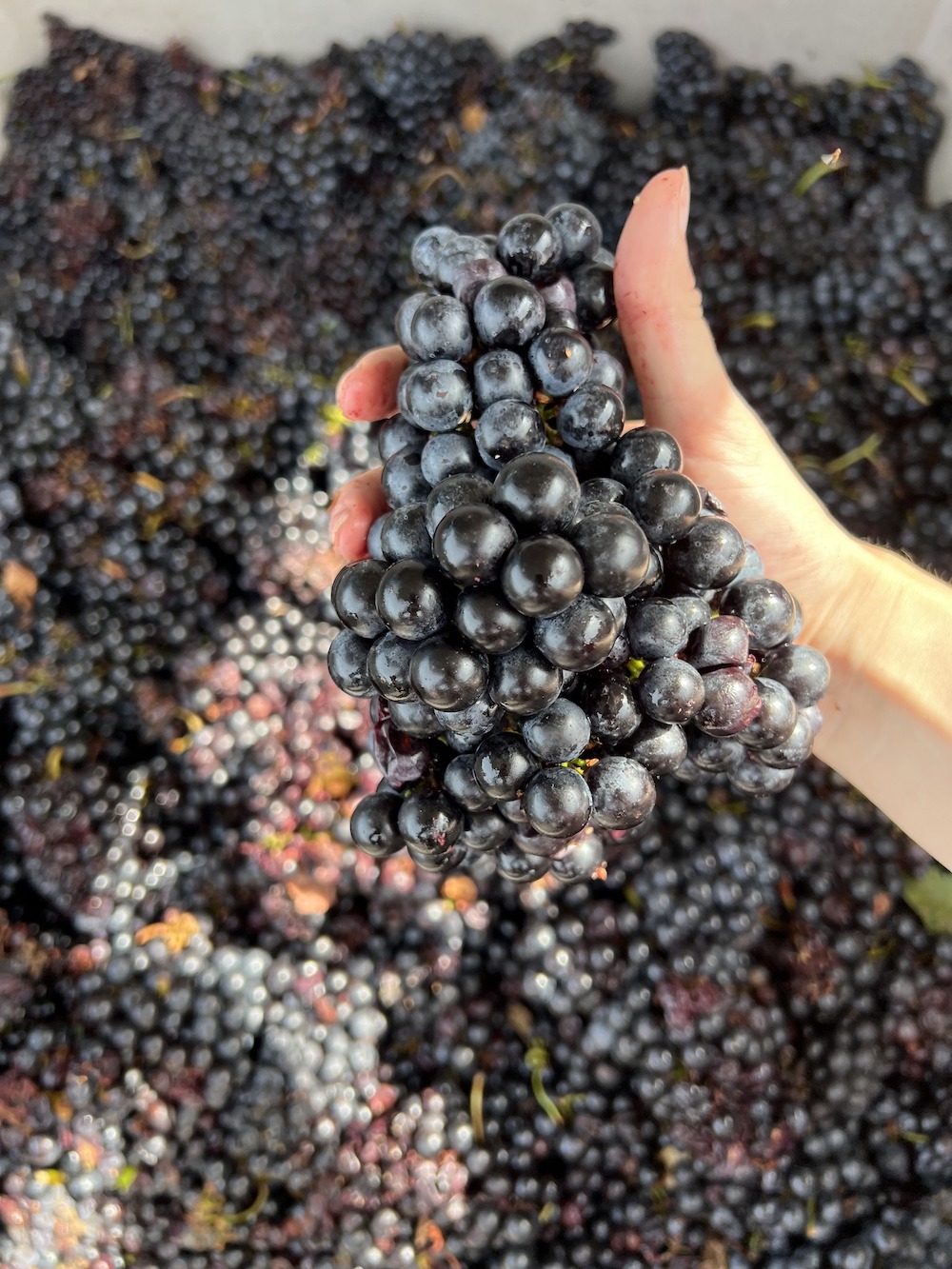
When I look at all the meteorological data we collected between the two sites, I was surprised to see that our Four Mile Creek site (the site that was colder in winter) was warmer than our St. Davids bench site during the summer months (average of 2.6 C warmer, the site had garnered almost 300 more GDD by September), but as the harvest progressed the gap got smaller between the two sights and on most days our estate was the warmer site.
I believe those crucial warmer temps during vine development and at the onset of veraison brought some of our aromatic whites on the Creek Shores site to a great starting point for ripening in the vineyard. In the wines I can now definitely see we captured the perfect picks in terms of chemical stability, complexity, and intensity. Those mid-September cooler temps really allowed for a slower development and perseveration of acids and aromatics on our Four Mile Sauvignon Blanc, Chard Musque, and Rieslings. The rain had also stopped, too, so this was great from a planning and logistical perspective.
Watching the organic St. Davids vineyard host warmer temps both during the day and night during the latter part of September and for all of October, produced those typical Ravine characteristics in our Chards and Bordeaux reds of richness in mouthfeel and boldness of flavour.
John-Daniel Steele, owner with Scott Woody,
of Horseshoe Cellars
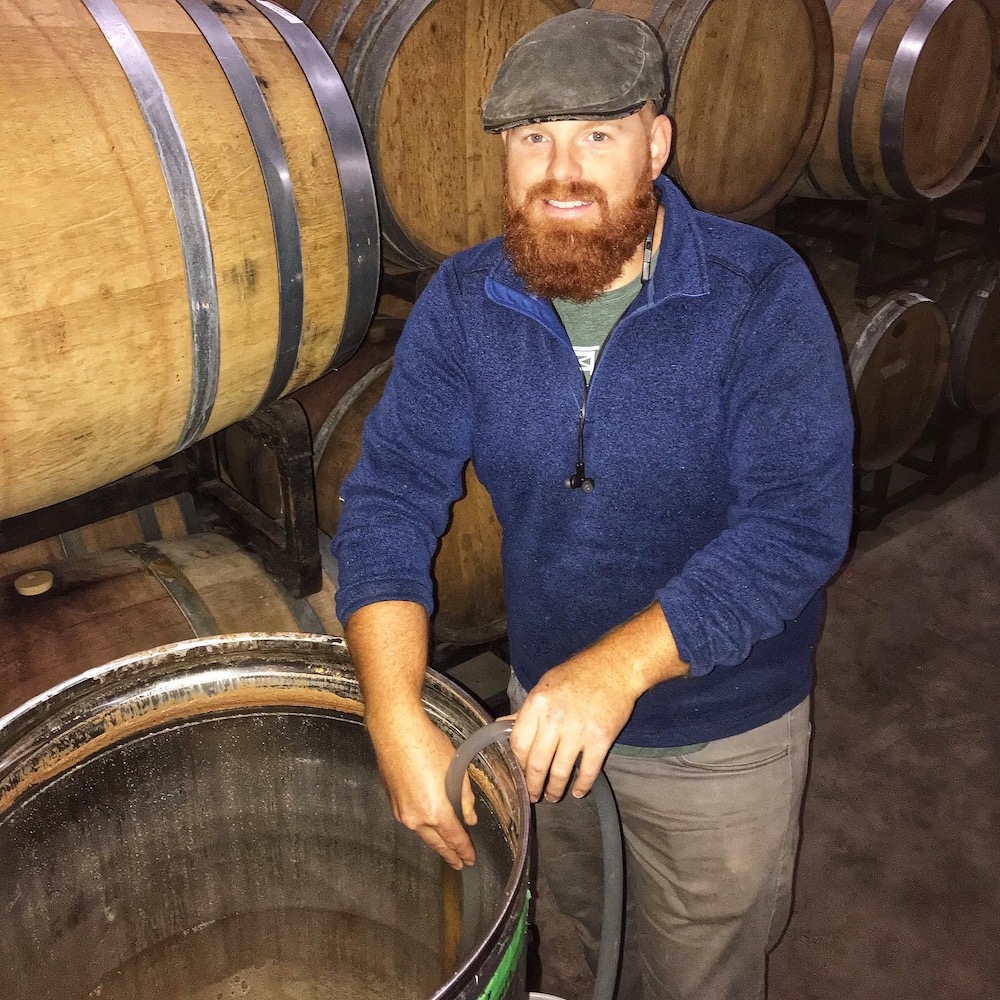
The 2022 vintage was highly affected by the rain events of fall 2021 and the resulting December cold snap: vines didn’t acclimatize on time and there was considerable bud damage across the Peninsula. Most vineyards along the Bench appeared to survive the brunt of this, nonetheless, bud numbers were below average in spring 2022.
Riesling from the Stouck Vineyard, located just north of the escarpment, fared considerably well compared to other varieties on the property.
The growing season was fairly typical, with some drought stress noticeable in younger vines during July and August. Around this time, we also saw powdery mildew poke its ugly head in a big way (likely due to a high concentration of overwintering spores from the challenging 2021 harvest). Despite the generally low yields and powdery pressure mid-season, the crop in Lincoln — at least for our Riesling – was clean and concentrated.
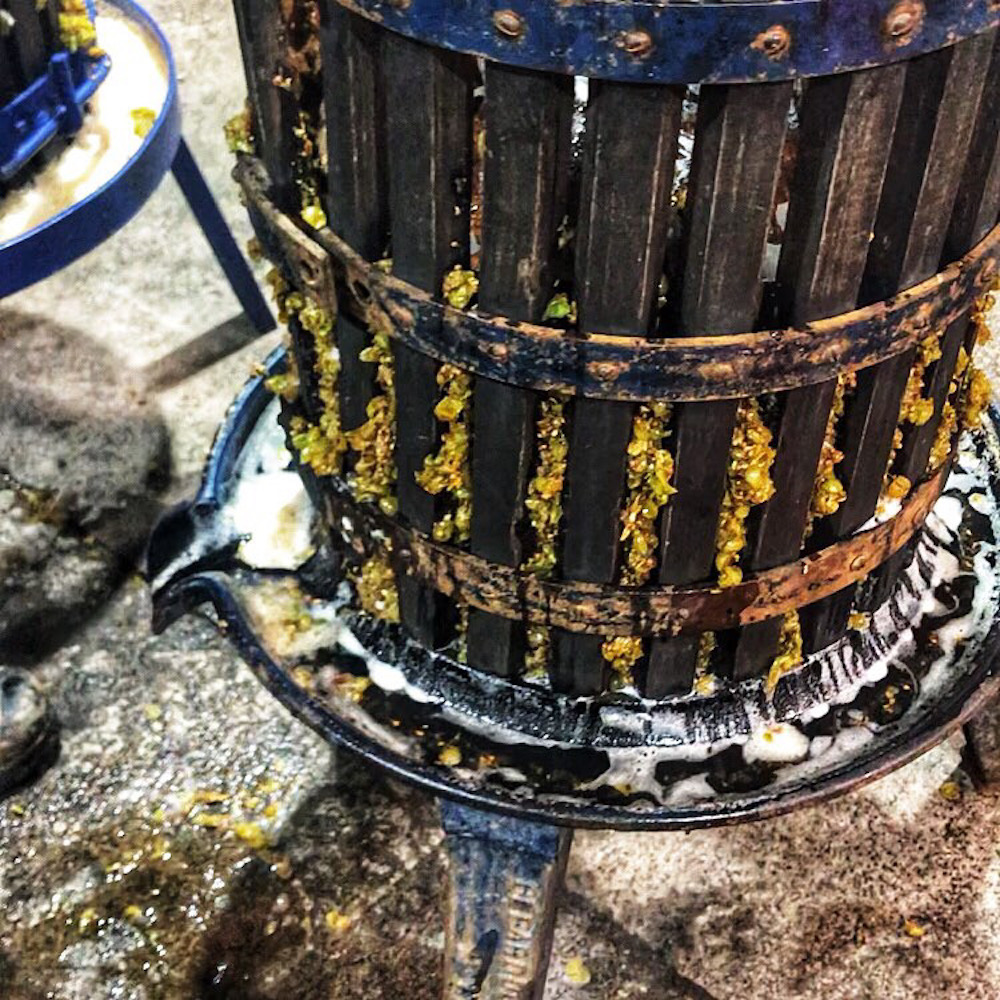
The wine we made has shown lots of nuance and depth at a young age. Brix at harvest were about average, perhaps a little higher, at 20 Brix. The wine was made to balance, and the result was a dry expression. Clusters were evenly ripe — not as intense as 2020 (lower sugar and acid) but with much more density than the 2021s.
With all this in mind, we are very much looking forward to the release of our first licensed vintage. The wine has beautiful concentration and intensity, and we expect it to age gracefully. It was a near ideal inaugural vintage for us at Horseshoe Cellars.
Joe Schenck, one of four principals at King and Victoria
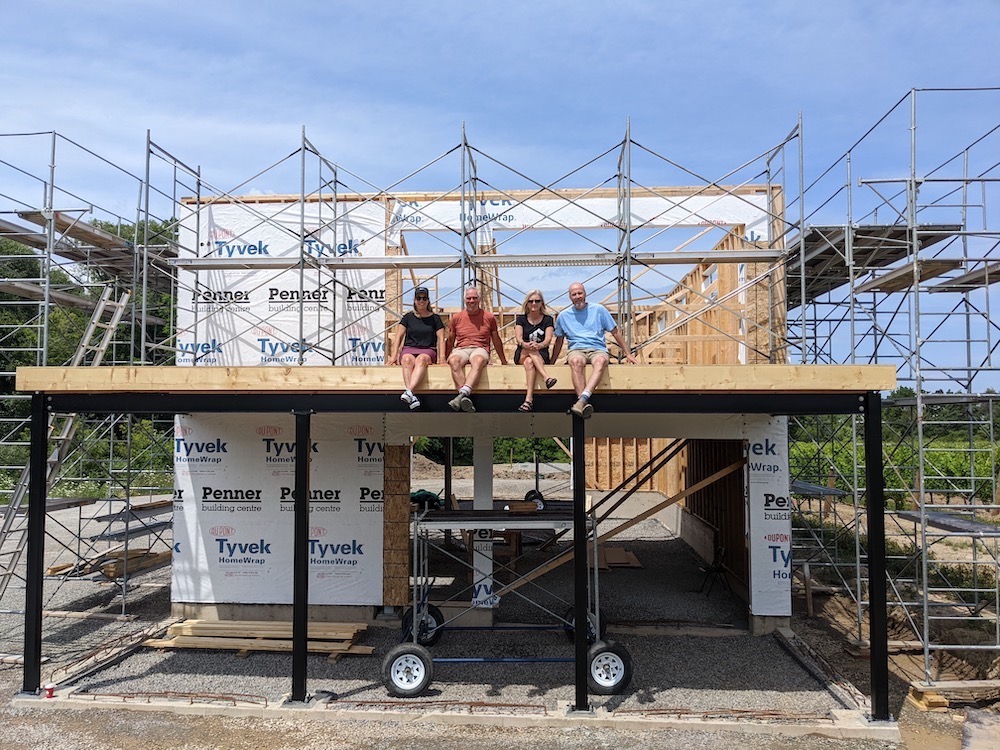
Following the wet fall of 2021 and a single blistering cold night in January of 2022, early bud testing throughout the region suggested that the damage may not have been as bad as might be expected.
Unfortunately, those early samples did not reflect the larger problem that was to be revealed. The trunks of many of the vines had not hardened off sufficiently and entered into winter very waterlogged.
During that one cold night, many vines were killed off at the ground. Of those that weren’t killed, another percentage had significant trunk damage that would only be overcome by bringing up new suckers from just above the graft. For those vines that escaped either of these most damaging fates, the early bud counts now came into play.
At King and Victoria, we source fruit from 3 vineyard sites, our own Hanck Vineyard, where the winery is located, in the Twenty Mile Bench sub-appellation, and 2 other sites in the Creek Shores sub-appellation.
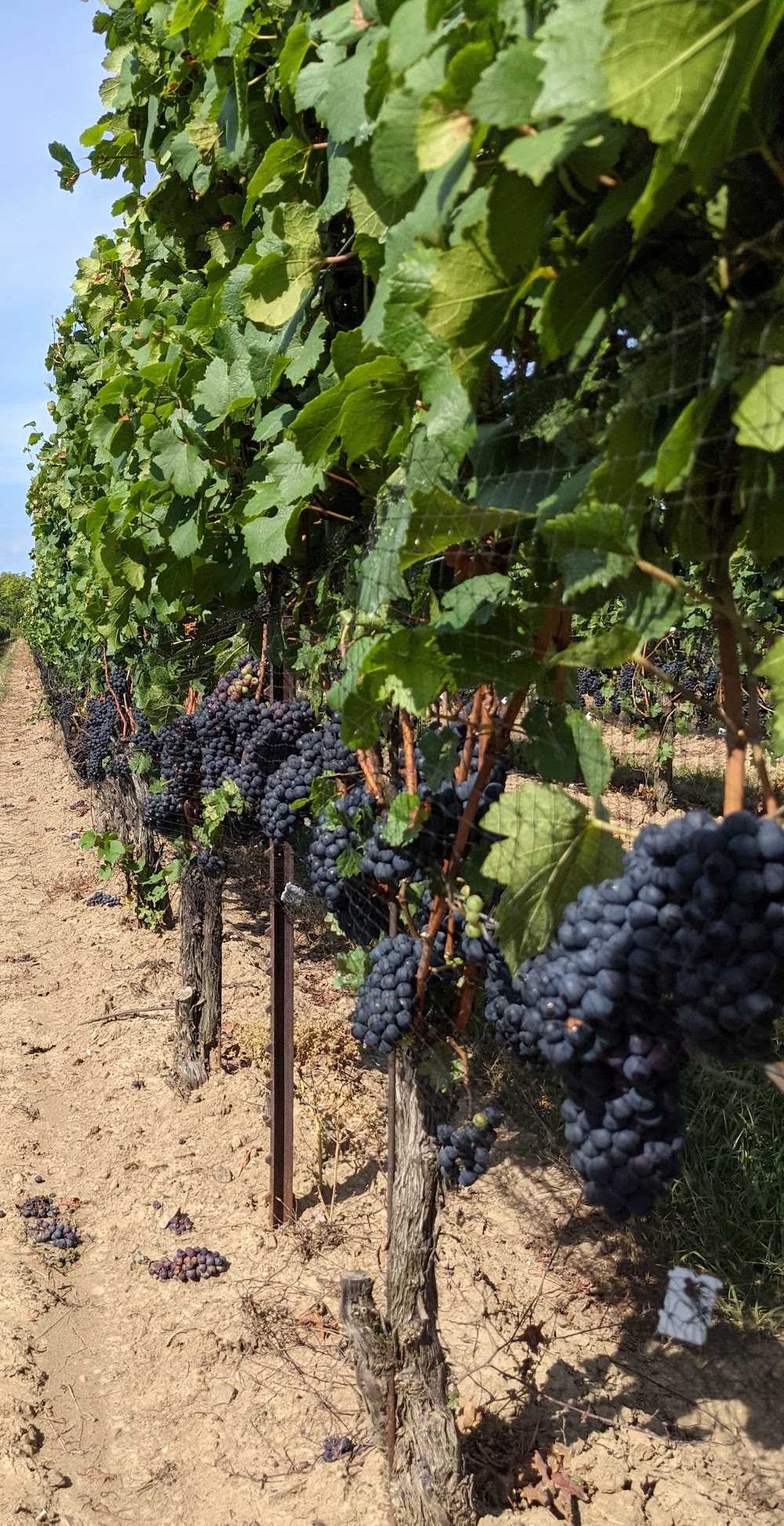
Of the two Creek Shores vineyards, the one hardest hit had up to 30% of the Chardonnay vines killed and no crop for 2022. The second Creek Shores vineyard produced approximately 35% of its average Cabernet Franc crop and 65% of its average Cabernet Sauvignon crop. The Hanck site fared better with its south facing, gently sloping, Bench location. The Gewurztraminer, Sauvignon Blanc, and Pinot Noir all managed crop levels between 50% and 60% of normal and the Riesling carried a crop that was more than 85% of a normal year. Vine losses were low at the Hanck site.
Aside from all the troubles that led into the 2022 harvest, it must be said that lighter cropping levels resulted in more concentrated and complex fruit. Phenolic ripeness was achieved earlier in 2022 and so, along with the greater concentration we also retained higher acidity. There is a real freshness to the whites and a very ageable complexity of concentration and acidity that should make this a stellar year for the reds. Pinot Noir is delicate and perfumed along with a firm backbone. The Cabernets need time to fully integrate in barrel but show great colour and tannic structure. Early barrel samples across all the reds suggest wines with the depth of the 2020s yet with more finesse.
As a new winery, just getting off the ground, we are not yet doing every varietal every year. The wines we did process in 2022, including a Riesling Pet Nat, are ripe and lively and great examples of what this cool climate region can do so well. The very high quality coupled with the very small volumes will make this vintage both an exciting and a frustrating one for consumers.
Jonathan McLean, winemaker at Black Bank Hill
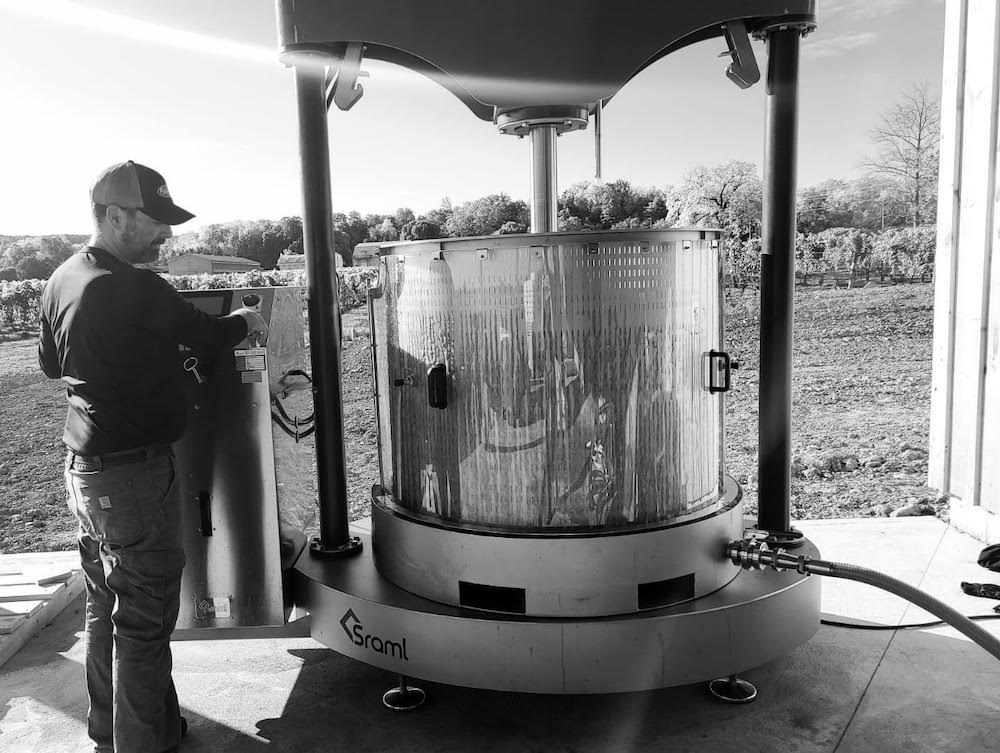
The fall of 2021 was very wet, and quickly transitioned into a long and harsh winter that was more than our vinifera vines could manage. Analysis before the growing season showed significant primary bud damage, but we remained hopeful. Budbreak occurred between the first and second week of May despite the fluctuating temperatures in April. With the emergence of new plant tissue, it was evident there was widespread damage throughout the vineyard. Tender varieties like Merlot and Syrah were devastated, retaining suckers was the only thing we could do to mitigate the damage. Cabernet Franc and Cabernet Sauvignon escaped the worst of winter’s effects, but the rest of the vineyard saw significant primary bud failure.
The middle of May brought warm temperatures and moderate spring showers that lasted into June giving our clay soil the water content to take itself through what would become a drought year. By the middle of May we were consistently above 25 C and temperatures never really went above 30 C for the remainder of the season.
A dry summer both in terms of precipitation and humidity, combined with very little cloud cover, gave us an early véraison and fruit with no significant disease pressure going into harvest.
With the memories of 2021 still fresh, we held our breath and waited to see what Labour Day and beyond would bring. Mother Nature was, in the end, very kind to us, giving more of the beautiful weather we had been experiencing. This gave Black Bank Hill the opportunity to play around with pick dates and wine styles. Using only estate fruit with a basket press allows us to be incredibly nimble and process our fruit in a multitude of different ways. As our first official vintage in our new winery, the low yields let us break-in our new equipment and develop our processes and procedures without the typical chaos of harvest.
Everything came off the vine earlier than usual due to the exceptionally low yields and ideal growing conditions. Sugars were skyrocketing, leading to a mere 3-week harvest window between Pinot Gris and Cabernet Sauvignon (picked Sept. 24 and Oct. 15 respectively). The fruit was in perfect condition when it arrived at the winery, clusters and berry size were all smaller than normal. Unlike the previous year we found no lady beetles on the sorting table which is likely due to the difference in fruit quality between vintages.
For Black Bank Hill, 2022 allowed us to create wines that have extraordinary concentration and depth of character. In terms of yield, the vintage was full of heartbreak because it was such a stellar growing season. What I think made this one of Niagara’s best vintages was the diurnal temperature variations we experienced particularly from véraison to harvest. This will leave an indelible mark on the 2022 wines, and I look forward to tasting them over the years.
Carolyn Hurst, owner with Grant Westcott at Westcott Vineyards
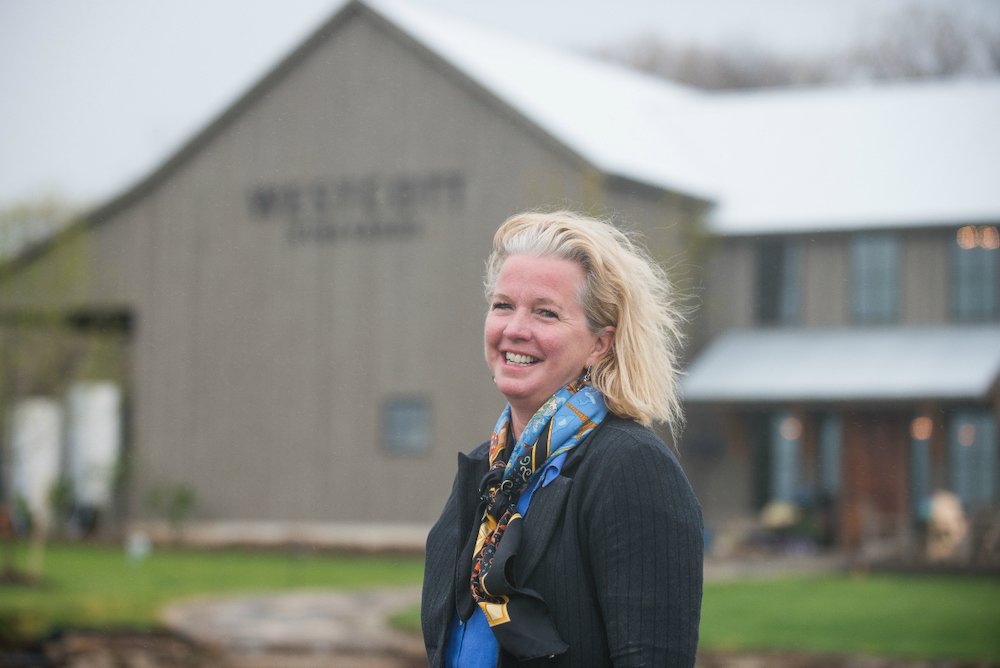
It was definitely another “interesting” harvest. I would say the summary of harvest 2022, for us would be exceptional quality, low volume.
The deep cold event of January 2022 impacted the Westcott Home Farm vineyard Pinot and Chard. 2022 at the Westcott home farm vineyard is now at 15th leaf and 11th harvest. The vines are starting to show some maturity.
Bud loss in 2022 was more than 50% and up to 100% in parts of that vineyard. Also, vine death is still being assessed but likely in the 20% range. Some vines showed life at bud burst and vigour into the first weeks of June and then collapsed in July (evidence of trunk damage).
The thermal blankets that we have installed on seven acres at the Westcott Home Farm have really paid for themselves – as those areas had a full crop load – to the extent that we were dropping fruit in these sections in August. Butlers’ Grant Vineyard was impacted less than Westcott – with bud and plant loss isolated to cold pockets. Many of our old vines are normally producing eight clusters or less per plant at this point. However, old vines do not throw off suckers to renew the trunk at the rates that younger vines do – so when you get trunk damage on old vines you likely lose the vine. Heartbreaking. And we definitely lost a few old vines this year. Low yields are a part of life in this vineyard. Since 2019 we have been working very hard to improve the soil life at Butlers: Lots of composted manure, no herbicides, and soil amending cover crop rotated every other row. Our hope is that constantly working to benefit the health and balance in the vine will prepare the vines to better fight adverse conditions.
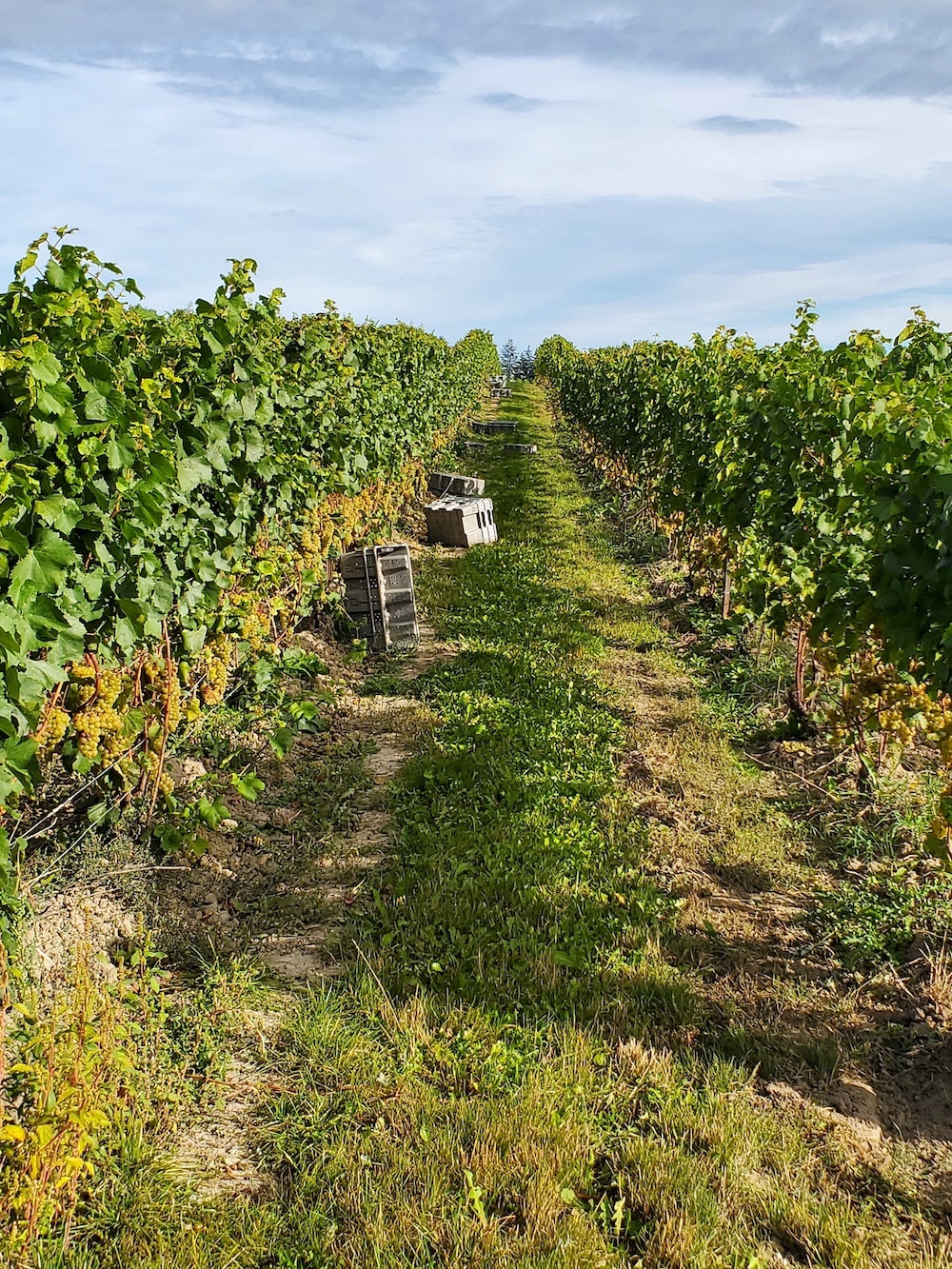
The summer months were ideal with lots of sun, heat and just enough rain at the right times to keep vines in great shape. Lots of canopy management. Vineyard expenses are the same whether a vine is carrying fruit or not, so we look at it as an investment in next year’s crop … fingers crossed. Low yields, but immaculate fruit were the order of the day.
Harvest started on Sept. 2 at Butlers’ Grant with Pinot Noir for sparkling wines while harvest began on Sept. 14 at Westcott for Pinot Noir and Chardonnay for sparkling. It continued on Sept. 24 with more Butlers’ Grant Pinot and Riesling, Chardonnay and Pinot Noir at Westcott. Oct. 4-h was Chardonnay from both Butlers and Westcott Home Farm with Cabernet Franc on Oct. 25. Harvest finished up with Butlers’ Riesling on Nov. 7.
As you can see, we were back and forth between the vineyards picking and choosing based on how the fruit was ripening and which end product we had in mind.
Casey Kulczyk (winemaker) is very pleased with the vintage. He says all the wines are “behaving” very well! Native yeast in all our fermentations were solid performers. Malo in the Chards in barrels doing what it always does … meandering into spring.
Graham Rennie, CEO of the Niagara Custom Crush Studio
and owner of Rennie Estate Vineyards
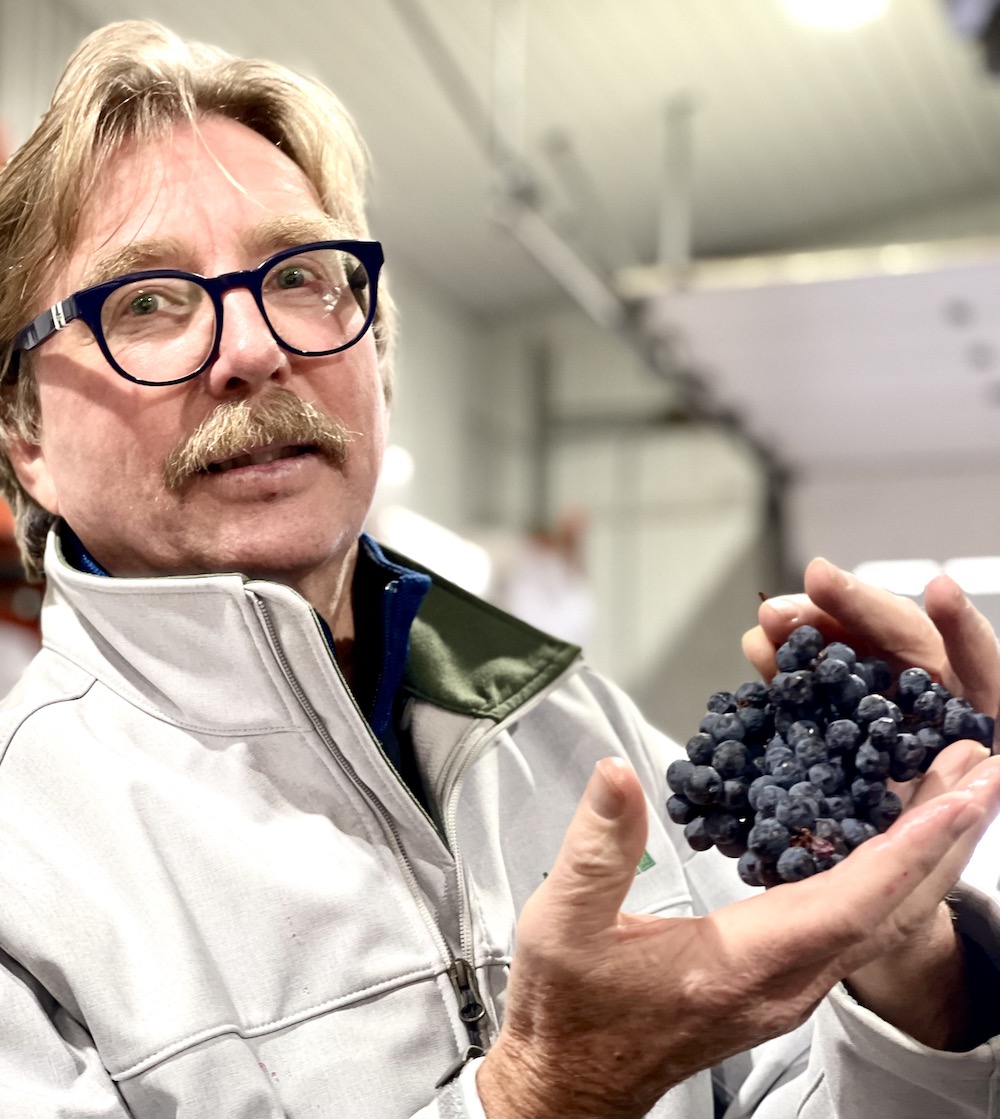
Damaging temperatures experienced in January 2022 resulted in many vineyards dealing with the negative effects of winter injury including Heron Pond Vineyard. Grapevine bud and trunk injury levels were quite variable across the Niagara region based on location and topography. Additionally, damage was dependent on vine age and the recent crop loads/stresses that certain vineyards experienced over the past couple of seasons.
In general, most mature vinifera grape blocks across Niagara suffered anywhere from 20-100% crop load reductions compared to 2021. Powdery mildew and downy mildew pressure was moderate to high during the bloom and post-bloom periods which resulted in some early infections in blocks that were not adequately protected during this time. The greatest amount of powdery mildew on fruit was observed in highly susceptible Chardonnay and Riesling blocks, which resulted in additional crop losses in ‘problem’ areas. Heron Pond had minimal issues with powdery mildew and downy mildew. Late-season downy mildew infections were observed in the upper canopy of many monitored blocks, which is a common occurrence in Niagara and further reducing yields.
The weather during September was ideal for fruit ripening with very little botrytis or sour rot developing in the early ripening cultivars. Temperatures remained elevated through October and a higher frequency of rain events resulted in some greater levels of fruit rots being found on susceptible late season cultivars such as Riesling, Syrah and Merlot. In general, fruit rot pressure was moderate during the 2022 harvest season.
Heron Pond suffered a 25% reduction in total yield relative to our average annual yields but the lower yielding fruit from Heron Pond was excellent across all varietals.
Early barrel tastings of Rennie Estate vino at The Crush reinforce our view that wines from 2022 should be excellent.
Niagara growers’ perspective of the 2022 harvest
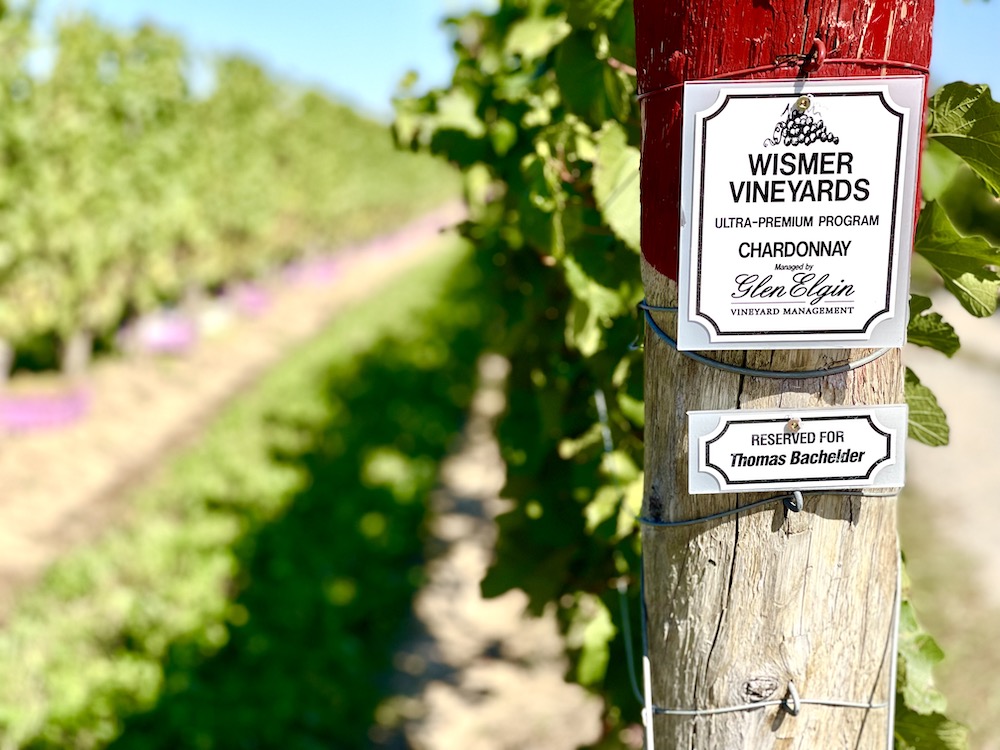
Craig Wismer, president of
Glen Elgin Vineyard Management
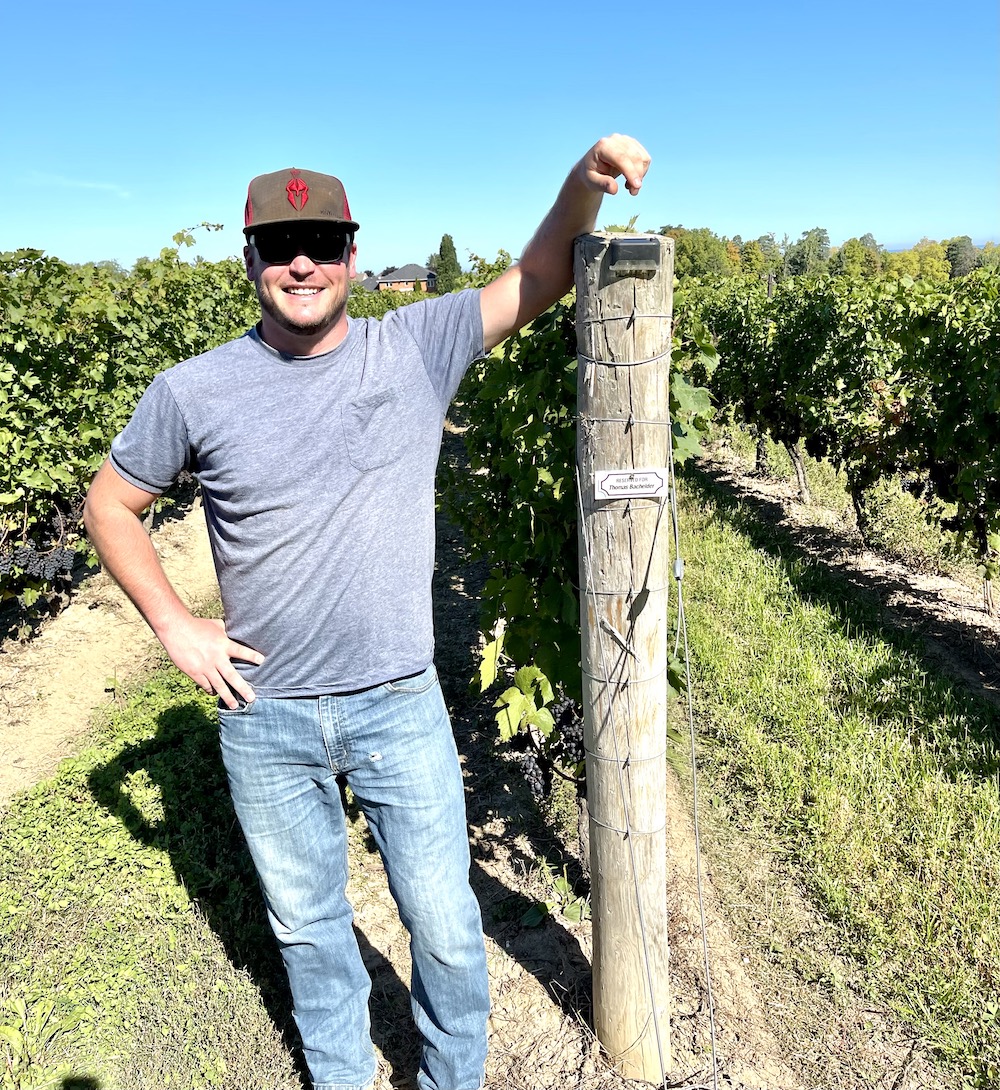
Another interesting season and harvest, indeed. The hallmark of this season was the widespread winter damage — affecting all areas of Niagara, and all varieties. We saw vineyard sites range from total annihilation (including widespread total vine death) to minimal damage, that could be compensated for with good viticultural practises.
As always in Niagara, we know we can’t control the weather. What we can control is how we deal with it. Despite many growers shrugging shoulders and saying, “it hasn’t been that cold.” We were out early, pulling in bud samples in our sensitive areas from our managed blocks. As we dissected, we saw a trend early on — consistent bud damage across all varieties and all sites. This is usually our first red flag that we have other issues, or at least compounding factors. The fall of 2021 was the perfect storm of said factors. High crop load, high vine stress, wet soils, and an abrupt end to the season (without acclimation.)
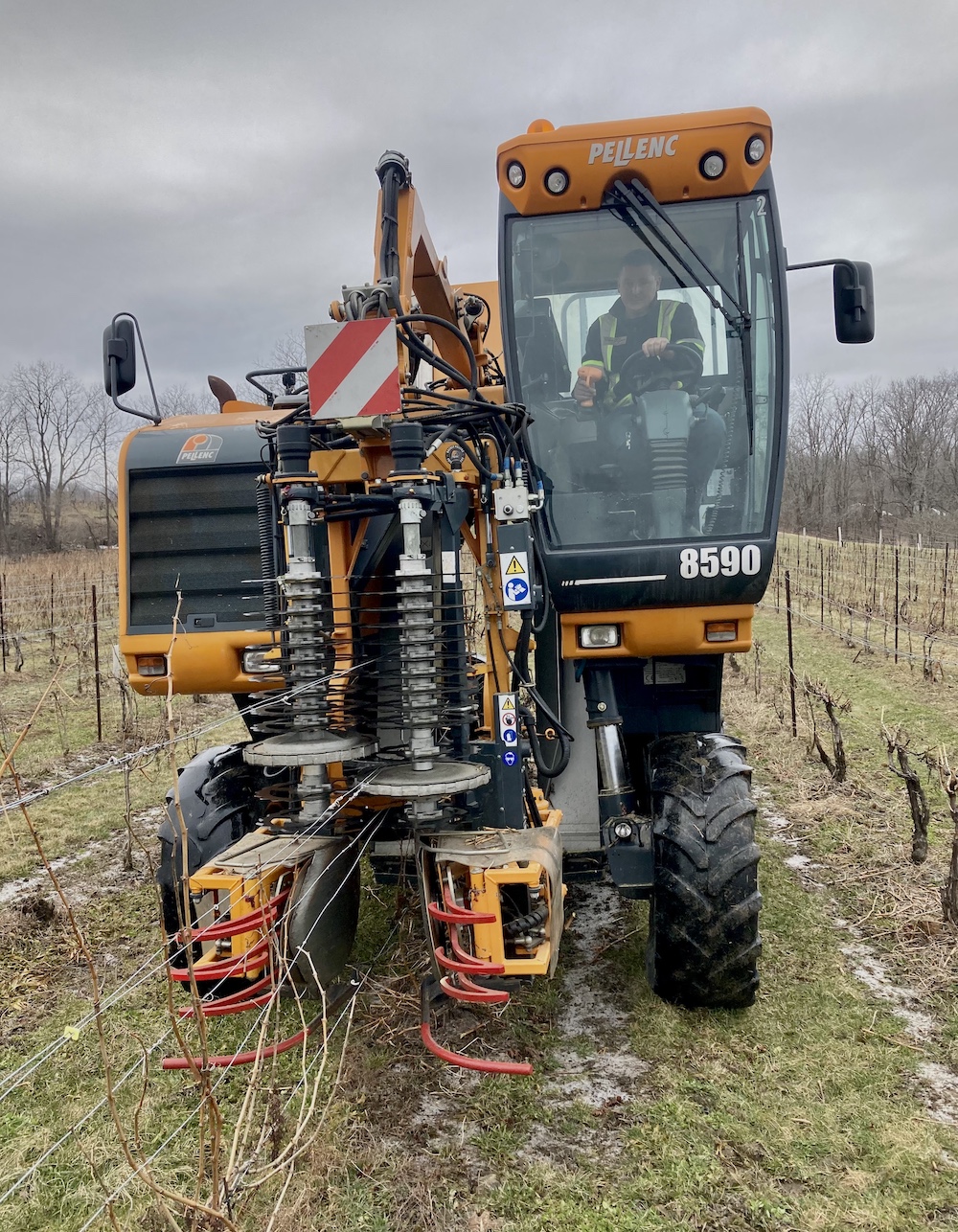
“Death by a thousand cuts” is an adept descriptor of these issues we faced in 2022 and it is common of any winter damage scenario. The single greatest thing we as vineyard managers can do is ensure our vines are in the best physical condition they can be, as any cut corner in the vineyard, can manifest as an additional “cut” to plant health. This was clearly evident during the 2022 growing season, well managed, healthy vineyards weathered the storm, and came through better, with more crop than neighbouring vineyards in lesser condition. Far too often we see corners cut on cool climate viticulture basics — proper soil management and cultivation, hilling up, renewing trunks, keeping additional canes etc. These should be foundational for any cool climate vineyard management program.
The dormant season block analysis and bud sampling our management team does is an absolutely critical first step in the vineyard management process. Having the right information allows us to make the best decisions for our clients. This comprehensive information helps us to mitigate damage and crop loss where there could be a crop and reduce operating expense where there is no chance of an economical crop.
As we pull in samples from each site, we begin to develop a plan. Which blocks are worth cropping, and which ones are likely complete failures? Cropping blocks, we need to maximize bud count (at a rate to directly compensate for the percentage of lost buds.) Blocks that are likely not worth cropping, how can we minimize operating expense to get through a year, saving for future replanting and rehabilitation? With new, optical mechanical pruning technology, we can immediately reduce pruning and tying expense by up to 90%, or approximately 25%-30% of the annual vineyard cost, as an example.
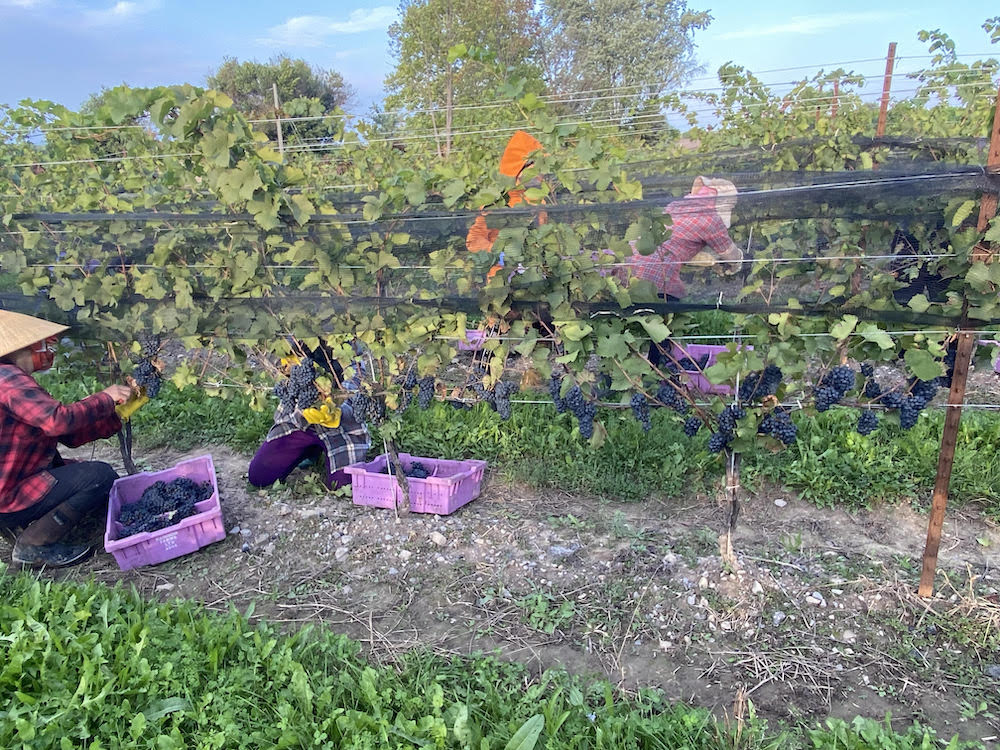
The winter damage in the vines was compounded as the season gave way to very dry conditions. It didn’t take long for trunk damage to manifest as shrivelling, dying vines. As these hopeful, lush green buds wither into desiccated brown ghosts of what could have been, it hurts just a little bit more as there has now been time invested. Most of the summer saw very little rain, until late July/early August. A couple of major rain events, with high humidity between rains pushed the risk of disease potential through the roof. Tightening up spray intervals kept fruit very clean as we moved through veraison.
As we rolled into harvest, all the remaining vines (and crop) that had not succumbed to the season, looked excellent. The fruit and canopy spotless, full of potential. All we had to do was wait … and wait we did. What looked like an early harvest delayed to a more conventional third week of September start for Pinot Noir and Chardonnay. From there, we were off to the races. Fruit came in quickly, and with stunning integrity. We were able to deliver beautiful fruit, but how did it taste? Were vines overly stressed? Was it too hot and too dry? All feedback at this time, points to the resulting wines looking good in barrel and in tank. It looks like 2022 will be another great Niagara vintage, for those that were able to harvest a crop.
Matthias Oppenlaender, Huebel Grapes Estates grower,
and chair of the Grape Growers of Ontario

2022 is a year that will be remembered as a challenging year for our industry.
The year started with a drastic cold snap as temperatures dipped to -26 C in some areas across Niagara, resulting in bud and extensive vine damage. Growers knew that there would be bud damage in their vineyards but did not expect the extent of damaged vines. In the spring, growers assessed the damage through early bud testing, and were faced with the difficult decision on whether to replant dead vines or go rogue and replant whole vineyards. The removal of some vineyards, and high bud mortality resulted in a much lower crop in 2022.
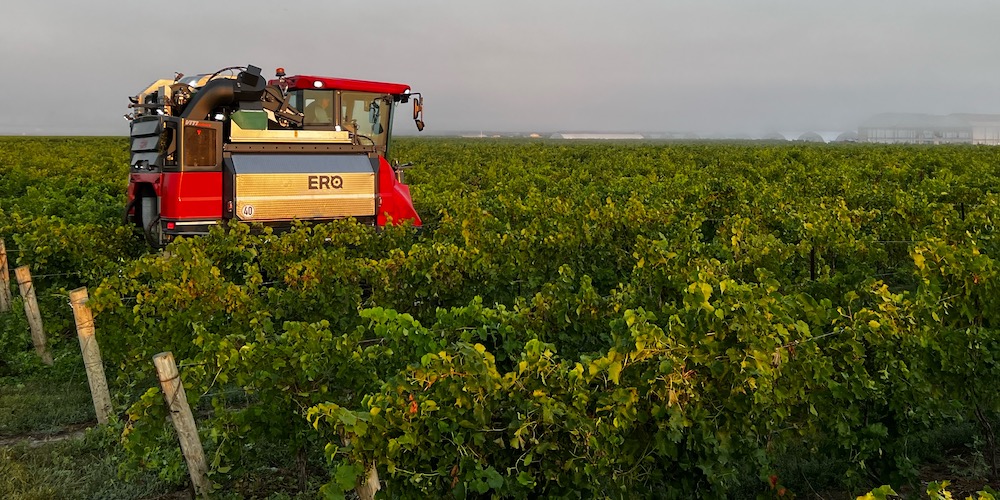
Yet, despite the curveballs Mother Nature threw our way, our growing season remained on target. The summer was hot and dry, and harvest remained on schedule. In our vineyards, harvest was more labour-intensive, as we hand-harvested to ensure that every healthy grape was picked, in addition to mechanical harvesting through our Opti-Grape and ERO Grapeliner harvester.
Our industry is resilient, and we adapted to make sure that we delivered grapes concentrated in flavour and quality to our winery partners. Early indication from our winery partners is that the whites and reds are showing really well. Wines from the 2022 vintage will be expressive, fruit-forward, and we are excited to showcase our 2022 Ontario VQA wines locally and internationally once again.
Kevin Watson, owner of K J Watson Farms,
and his son Connor
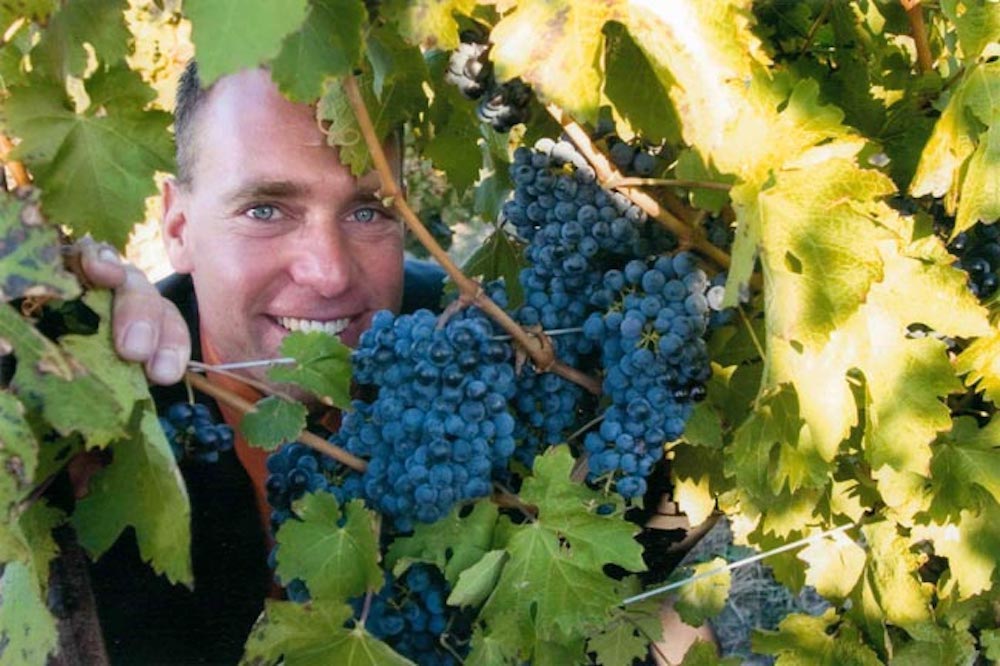
From Kevin: Last harvest was great quality across the board but only a third of the yield due to fall of 2021 being so wet and not allowing the buds to properly harden off for winter. There was very little rain and fog for harvest 2022 so there was no breakdown or grey mould. Stellar quality vintage.
From Connor, who recently graduated from the University of Guelph where he spent four years studying the food and agriculture business: 2022 was my first full harvest and although the tonnages were down it was a great year to jump in. It felt as though we had a bit more time on our hands to explain why we do things the way we do and it gave me a chance to prove myself. Regarding the vineyards, we were fortunate enough to have suckers push out from the bottom causing a good amount of wood in the vineyards for pruning and tying. So far, we have had a relatively mild winter and we are optimistic about the 2022 season.
Bob Nedelko, Twenty Mile Bench grape grower

The 2022 vintage was an extremely light yield, half, or less than half of a typical year as far as tonnage goes. The quality was excellent, particularly the Pinot Noir and Riesling that had the right balance of ripeness, sugar, and acidity. Cabernet Sauvignon also did remarkably well in terms of ripeness. I think that 2022 vintage will produce some excellent Pinot Noir, and Rieslings. I would sum up 2022 vintage as a small crop of excellent quality.
Prince Edward County
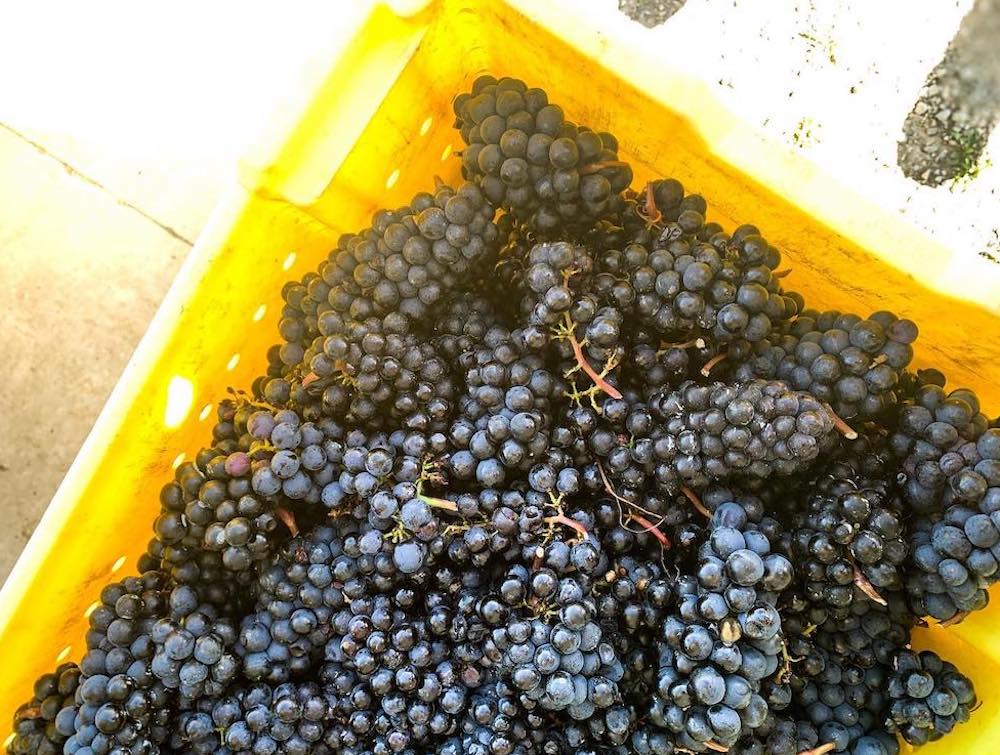
Dan Sullivan, winemaker/co-owner
Rosehall Run Estate Winery
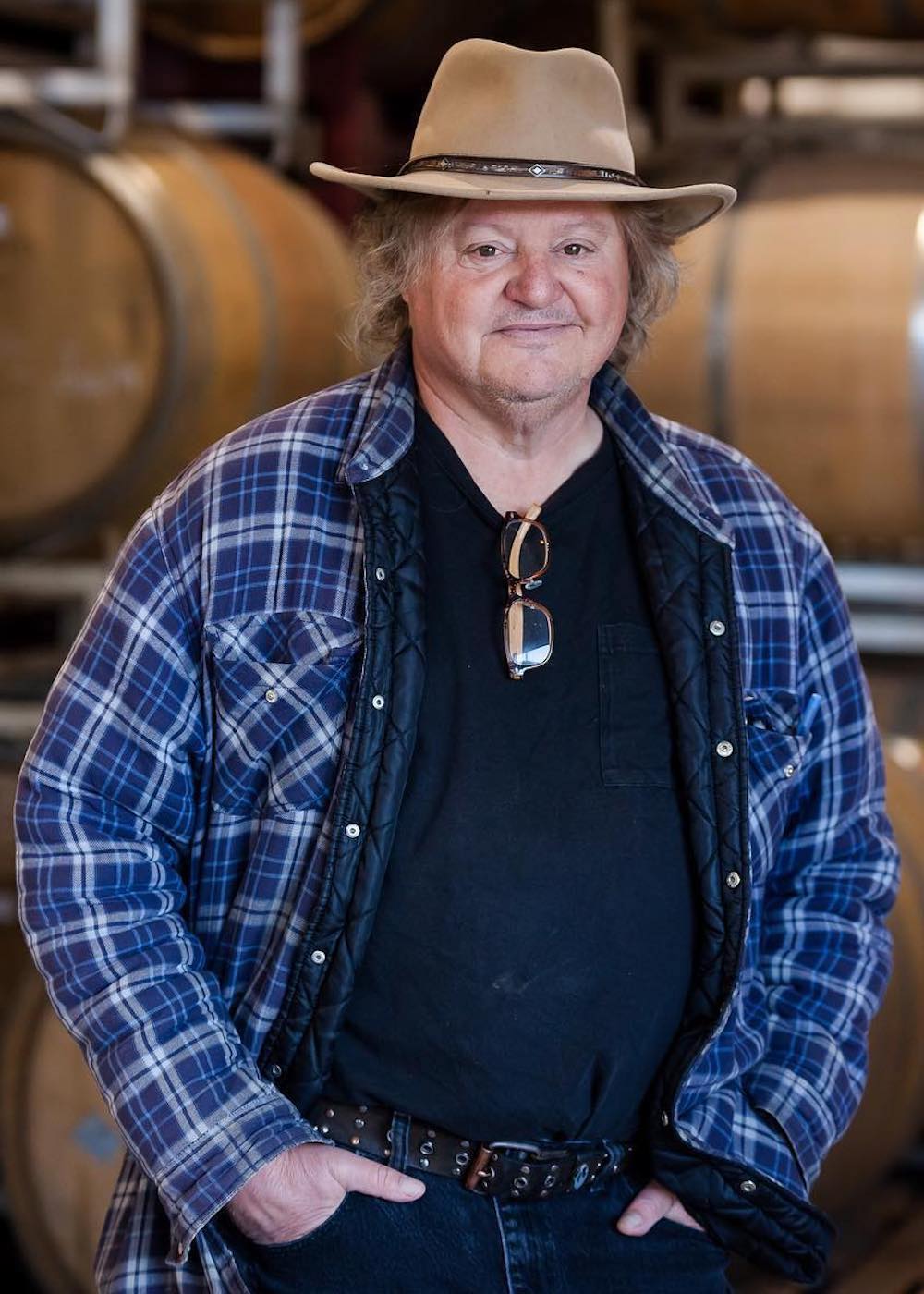
Yes, 2022, kind of like the rain shadow on the other side of the deluge of fruit in 2021.
Most of your readers probably aren’t aware that the potential fruit yield of a given year is heavily influenced by the year that proceeded it. Heavy crops and late cool vintages usually result in smaller crops the following year. Consequently, it was expected that 2022 here at Rosehall Run was destined to be lighter than the abundant 2021 crush. This follows a recent pattern of the even years being light and the odd years heavier dating back to 2015.
The weather pattern last year was similar to other recent vintages with a coolish but dry spring. Once it warmed up though we were treated to a fabulously warm and long summer. What made 2022 a bit different was that we had a few timely showers that helped ease what could have been a very droughty summer. Tempered by a lighter crop, the vineyard sailed into September with plenty of kick to cross the finish line.
Pinot Gris was harvested on Sept. 18 quickly followed by our various PN blocks which were handpicked over a three-day period from the Sept. 23-25, a bit earlier than usual, ahead of some forecasted showers the following week. Chardonnay and Sauv Blanc came off early in the second week of October, about 5 days ahead of average. These whites benefitted from the hangtime and at this point are showing themselves to be richly fruity but with lots of the fresh acidity we prize in our fruit. In fact, all the wines are showing a decidedly precocious character that should make them approachable early but able to age gracefully.
Mackenzie Brisbois, winemaker,
and vineyard manager at Trail Estate
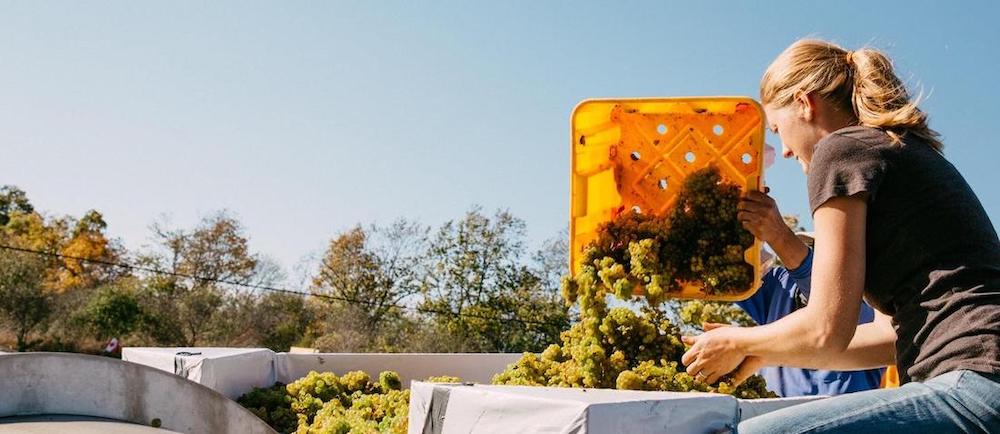
The 2022 harvest was a wonderful harvest in comparison to the wet harvest of 2021. The vines suffered some damage over the winter, as a result the quantity of grapes available for 2022 was quite low. The season started out later than normal but caught up throughout the summer. Well-timed rains in June and July kept our Prince Edward County vines in a healthy state throughout the season. Harvest was a beautiful season, not too hot and not too cold and vines were harvested at optimal times. The season should showcase great quality, but not a lot of quantity!
Andre Gagne, owner, Last House Vineyard, Hillier Ward
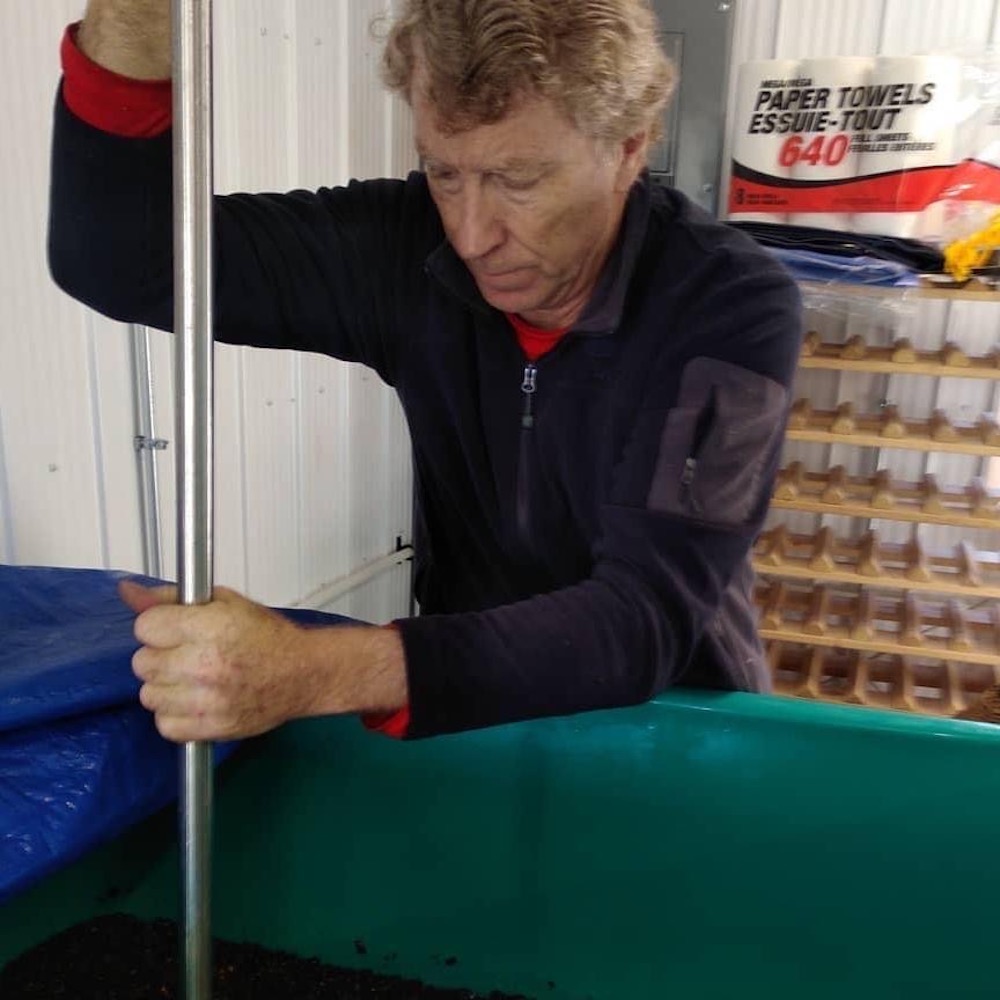
Harvest 2022 was the fourth harvest for Last House Vineyard. It was the second harvest with a full complement of grapes coming from the newer vineyard planted in 2018. Once again, the story of the 2022 harvest in PEC starts the year before in 2021.
After a mild winter, the 2021 season saw a high volume of grapes for potential harvest. The result of the heavy crop was vines that were somewhat stressed prior to winter. The heavy rains and lack of sun in the fall of 2021 inhibited the ability of the vines to quickly acclimatize for winter. Next up were the record low temperatures in January and February. The tied down canes were well buried under soil and adequately protected. All aerial canes experienced bud kill and had to be cut out in the spring. The result is that fruit set for 2022 was at about 50% of normal levels.
The 2022 growing season was a bit slow to start with a cool spring. An early invasion of leafhoppers in May was easily dealt with. June and July were quite typical with adequate warmth and no excessive rain. The disease pressure for downy mildew after July was quite high due to mists (Lake Ontario exposure) and did not allow us to be fully Organic in our spray regimen. September brought some heavy rains early in the month and then more normal weather conditions. A lot of work in the vineyard did allow us to maintain a healthy canopy right into late November, so again, the vines were well prepared for winter.
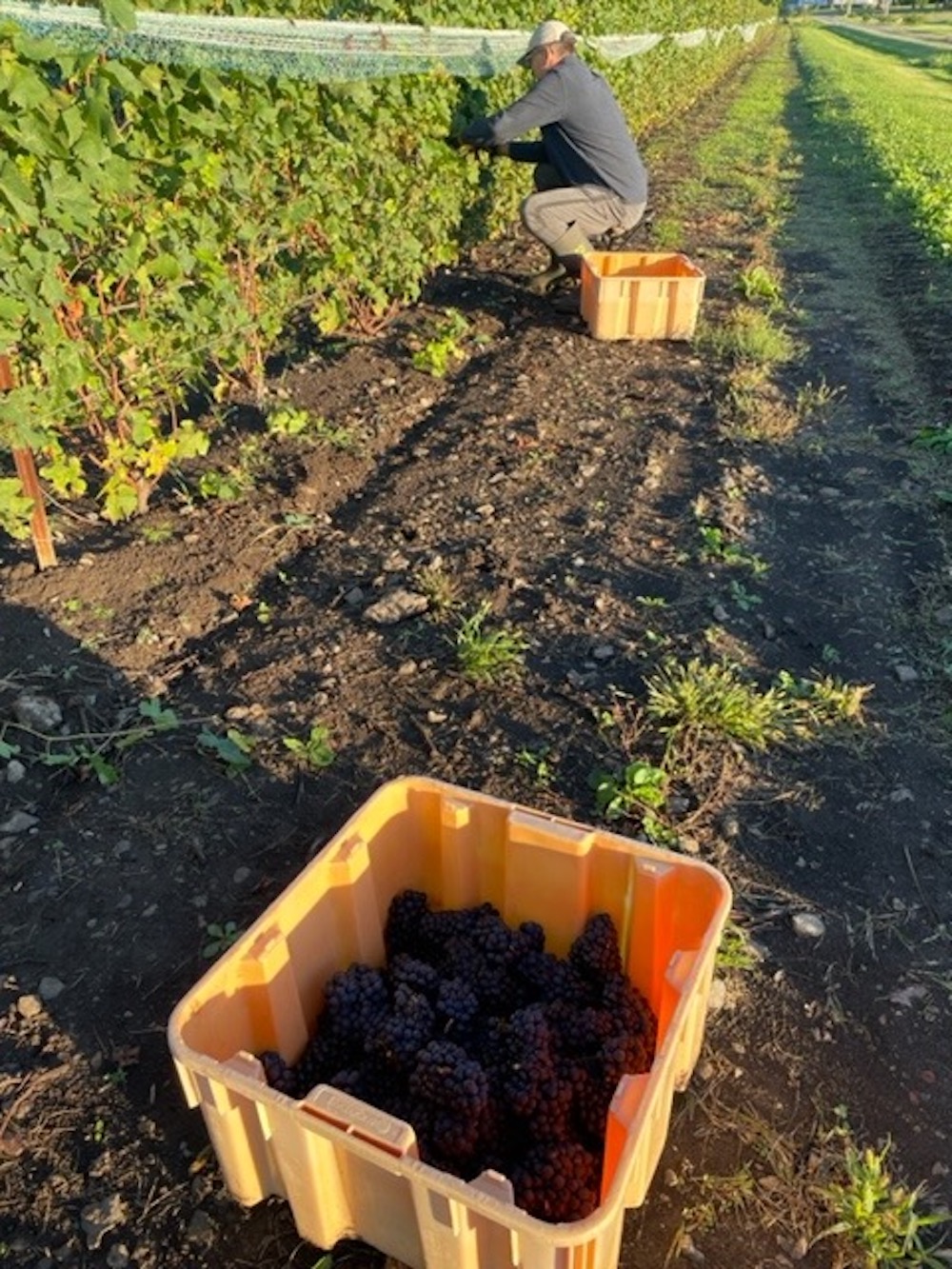
Harvest started in the last week of September. Picking was spread over 3 weeks, with the early pick focused on Traditional Method Sparkling made from both Pinot Noir and Chardonnay (younger vines). The second pick was dedicated to a skin fermented white made from Chardonnay. Some rains over harvest worked against us in terms of achieving additional sugar levels. They also caused the onset of rot which forced us to reduce potential hang time. As the picking progressed, we were able to make our flagship Pinot Noir and Chardonnay. All wines made in 2022 will qualify for VQA.
The lower volume of fruit in 2022 was such that we produced about 50% of our expected long-term annual production. Our good friend Battista Calvieri at Hubb’s Creek needed fruit so he took part of last Chardonnay pick and incorporated it into his 2022 program. We will likely do a joint release (collab pricing) with this wine.
In 2022 we made four different wines from Chardonnay and two different wines from Pinot Noir. In the Chardonnay line-up, there is a Blanc de Blanc traditional method, a skin fermented white and two levels of table wine, including the flagship Hillier Blanc Christian Block. With the Pinot Noir we made two wines including a Blanc de Noir traditional method and the flagship Hillier Rouge Daniel Block.
For 2022 we also took off our first small crop of golden Russet apples from our orchard. The home orchard fruit came in at 19 brix! This was supplemented with some purchased fruit to make a batch of Artisanal Cider. This year some of the cider with be bottled still and some will be bottle-conditioned.
At Last House Vineyard we grow Chardonnay and Pinot Noir for wines and golden Russets for cider. In our opinion, the 2022 vintage is of excellent quality and favours Chardonnay. With four versions of Chardonnay made this year, we continue to evolve into being a Chardonnay specialist. But Pinot Noir will always be an important part of our mix.
We are still quite new at this and looking back on the 2022 harvest, we realize that this was probably a typical PEC year for weather. We were blessed in 2019 and 2020 while 2021 was challenging. But that is real winemaking and there will always be vintage variations. We will make the wines that the fruit allows us to make each year and we will make them honestly.
Ottawa Valley
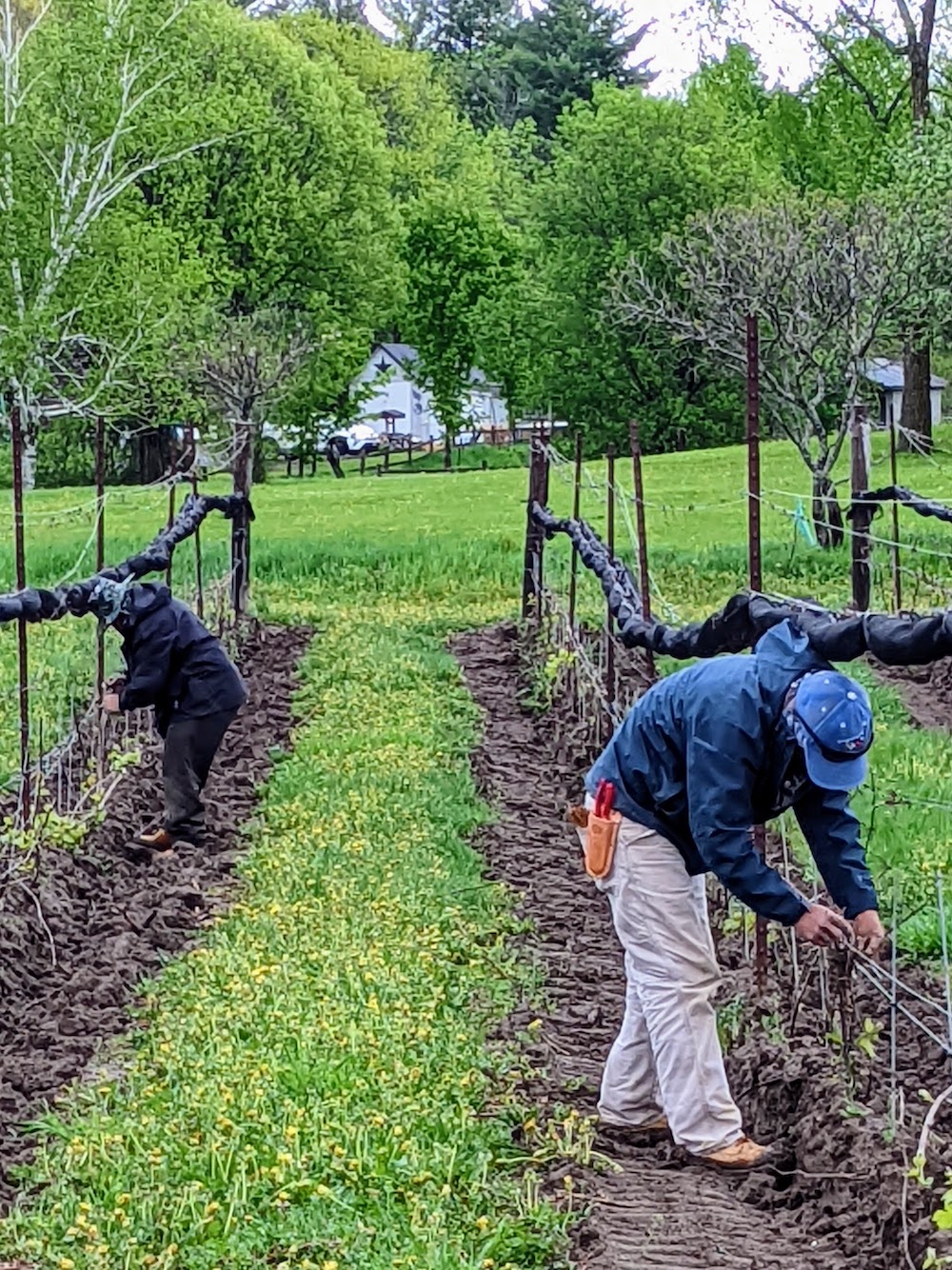
Brian Hamilton, KIN Vineyard

It was a challenging year to say the least, but those who have fortitude saw the creation of some fine wines, albeit in smaller volumes.
We began with a different approach in 2021 with the addition of two offshore labourers who would allow us to achieve the pace of work required to manage our viticultural and expense goals throughout the season. They were game changers!
Pruning of the previous year’s brush began April 13 with our top and middle blocks of Chardonnay and Pinot Noir which are located at a higher elevation on the Carp Ridge property and not prone to spring cold events. The brush was pulled and mulched within the rows while the canes were tied to the fruiting wires starting May 16. Given that our bottom block of Chardonnay was 100% frost damaged the previous season, on May 28, our plan in 2021 was to unearth this block of vines as late in May as possible, to avoid any cold events. We accomplished this task just after the May 24 weekend and tied the canes to the wires by the end of the month.
The start to the vineyard year was wet and cooler, and while this assisted with avoiding frost events, it did slow growth in the early part of the season and prevent early entry to the vineyard for mildew spraying.
Bud break was mid-May and flowering by mid-June, which were both typical windows.
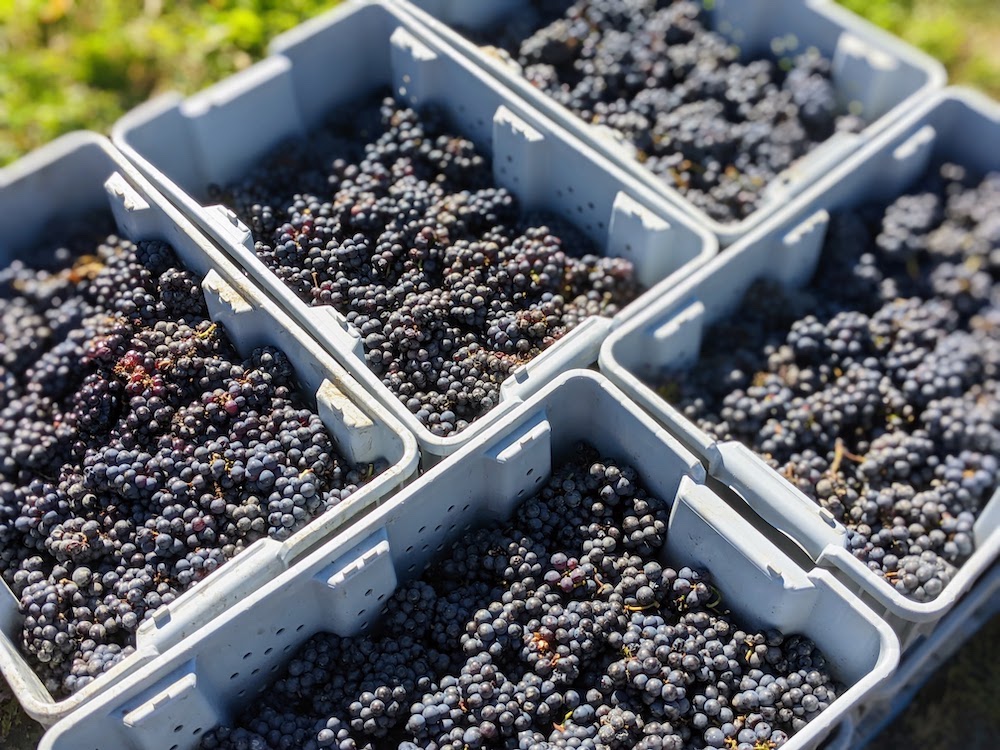
The continued wet spring created a protracted flowering period and poor fruit set. We could foresee a harvest with a broad range of ripeness with a need for careful fruit selection and sorting. This was realized at picking. Few volunteers were utilized, as would normally be the case, as we opted to have our team manage the difficult sorting for ripeness and integrity.
The growing season saw pressure from both disease and insects, downy mildew and black rot being our biggest challenges, but Japanese leaf beetle and wasps were also damaging to the canopy and fruit.
Veraison started at a typical date of Aug. 10, and was largely completed over the following four weeks. Harvest began Sept. 29 with our Carp Ridge Pinot Noir. Quality was good but yield was down by 75%. Chardonnay was picked Oct. 2 but yield was minimal and only our skin fermented Chardonnay as made.
Preparations for the tying of our vine canes to the ground wire began in mid-August, allowing us to finish harvest and quickly bury our canes once the weather cooled. The long, warm, autumn allowed the vine canes to harden off well before burial, which bodes well for good bud viability in the spring, provided winter protection from soil burial and snowpack is sufficient over the winter months.
Our offshore labour team was able to prune, pull and mulch the brush prior to autumn departure so we will be ahead of schedule come May 2023.
Our Carp Ridge Skin Fermented Chardonnay will see seven months elevage in stainless steel prior to bottling in late May 2023 while our Carp Ridge Pinot Noir will see an elevage of nine months in French oak (25% new) before barrel blending and bottling in late August.
NOTE: Watch for our Vintage Assessment for 2022 and our exclusive Ontario Vintage Chart for years going back to 1998.


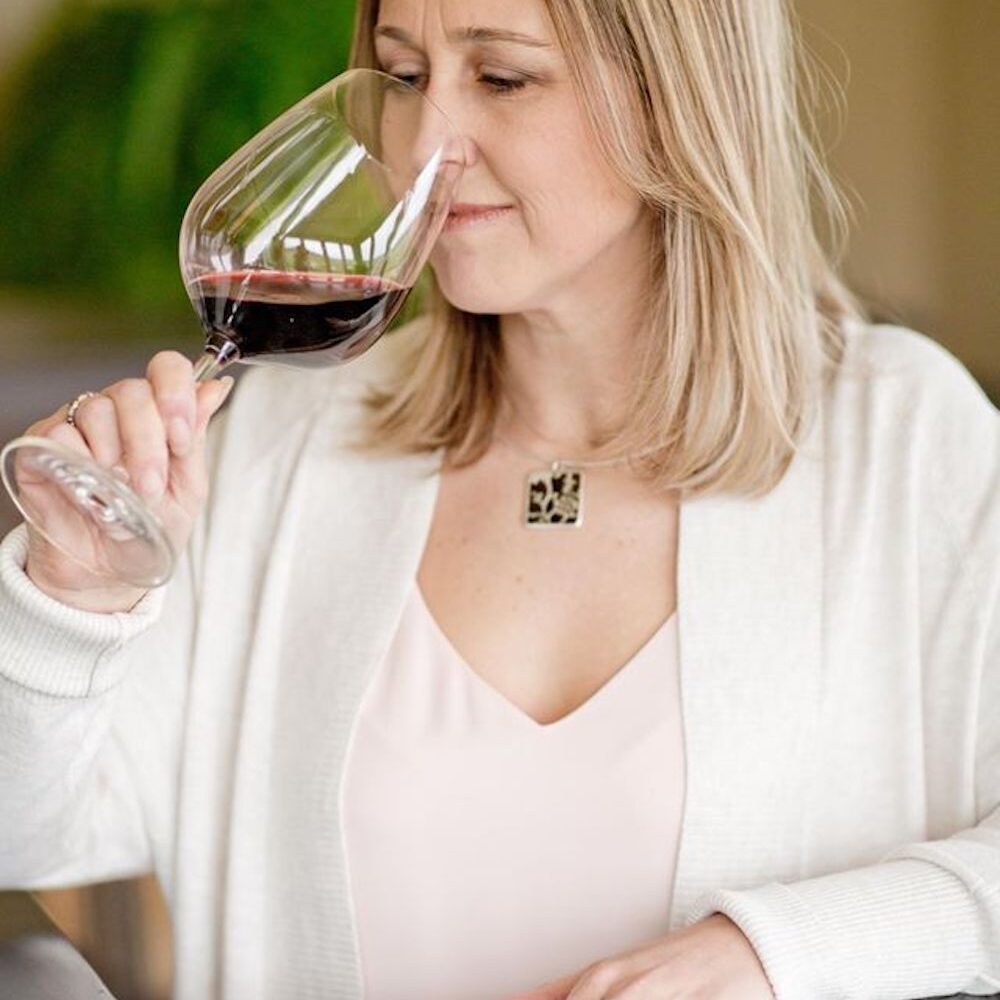




Comment here